Three days is the perfect amount of time to spend in Melbourne.
Why? Well, there are three main regions in this city when it comes to tourist attractions:
- The north of the Yarra River
- The south of the Yarra River
- And the CBD
That means that with 72 hours in town, you’ll have enough time to check out the city’s main tourist attractions within the CBD, explore the hipster scene of the north, then wander through the beachy suburbs of the south.
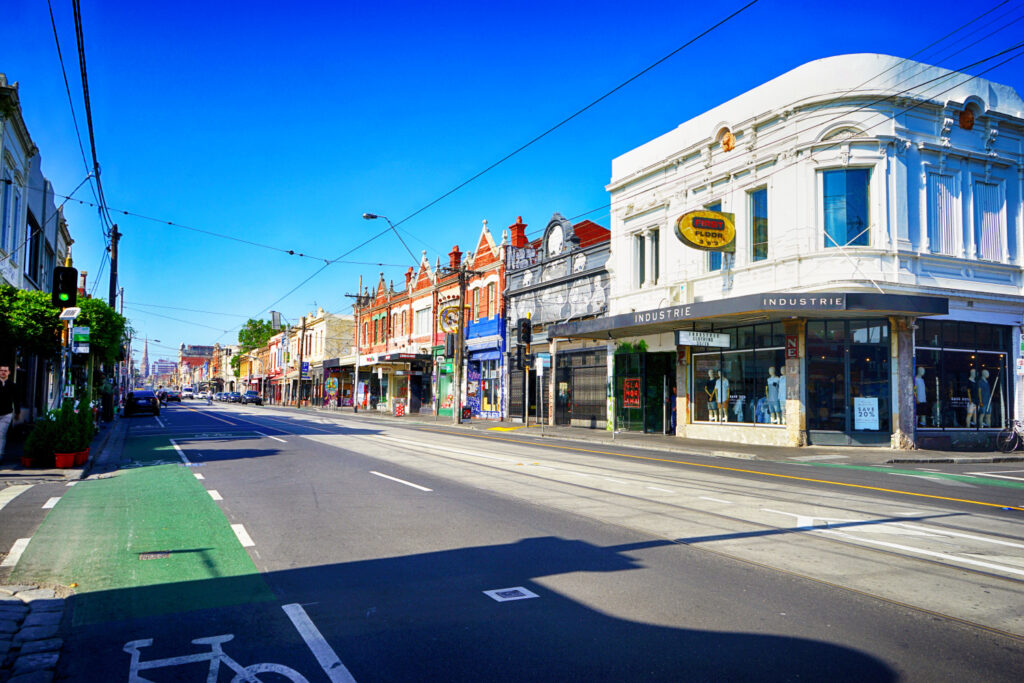
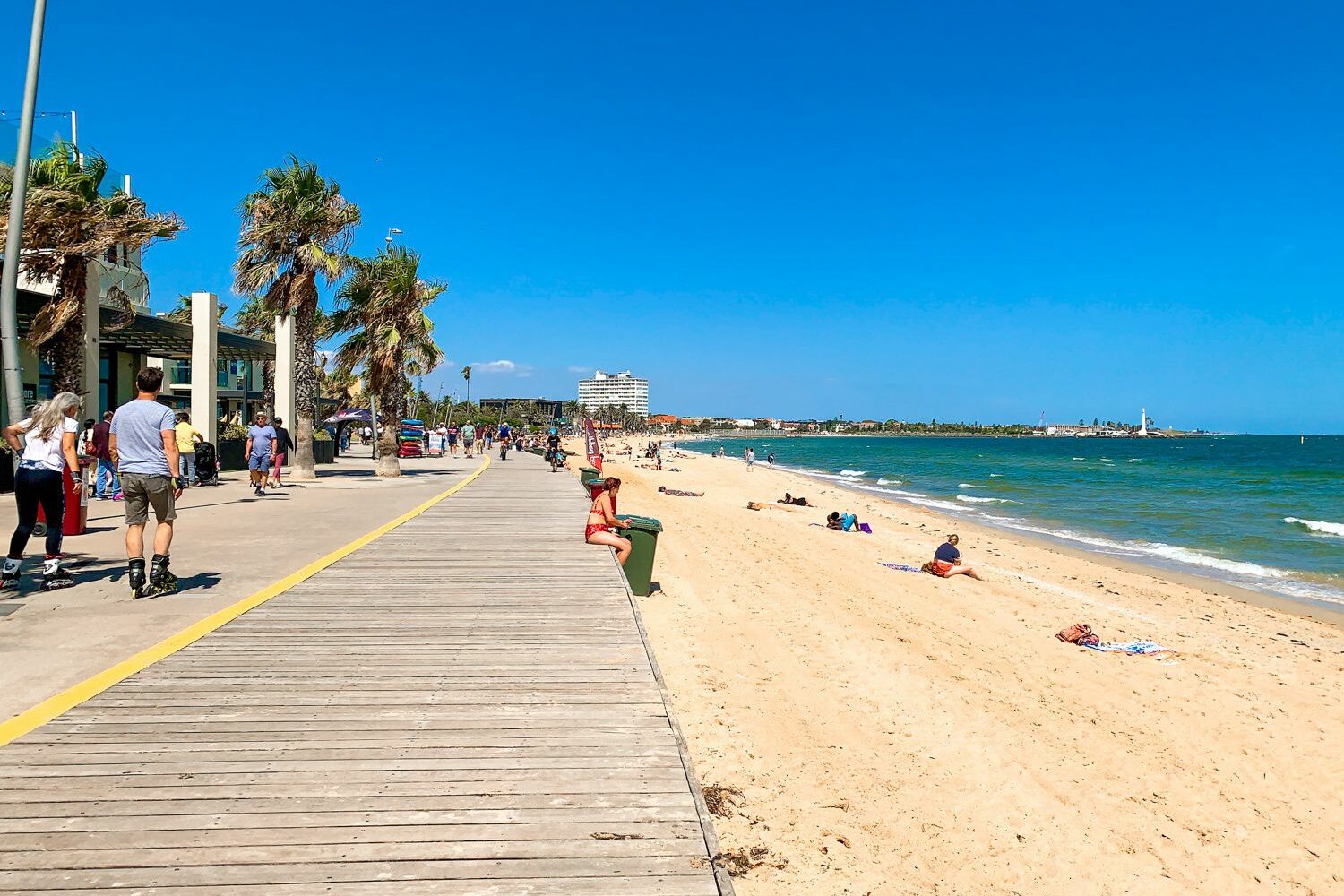
And now feels like the perfect time to give you a quick primer on the north-south divide of Melbourne.
Within inner-Melbourne, you’ll find two types of people: the people who live north of the river, and the people in the south. Northside is political, artsy, and creative, filled with converted factories, bicycles, street art, and more hipsters than you can shake a flat white at. Southside is the opposite: it has the beaches, the sea breeze, the expensive cars, athletes, healthy living, and glamorous lifestyles.
I’m generalising a little here, of course, but it’s all to give you a rough summation of the two areas of the city. Once you get here, you’ll notice that they’re quite distinct from each other.
You’ve also got the CBD, which is where many of Melbourne’s “tourist attractions” reside.
Why the quote marks?
Well, if you know anything about Melbourne, it’s likely that it’s named one of the world’s most liveable cities: it’s nearly always ranked in the top three every year. Well, you can believe the hype: it’s totally true. As somebody who had the ability to live anywhere in the world — I travelled full-time as a travel writer for a decade before settling down — and chose Melbourne, I can vouch for how great this city is.
But the implied downside of all that liveability praise is that it’s not a city for tourists.
It doesn’t have any world-famous landmarks.
Its skyline isn’t particularly recognisable.
Its museums aren’t known on a global scale.
Its beaches aren’t spectacular.
People often say that you should go to Sydney as a tourist and Melbourne to live.
And sure, we may not have the tourism big-hitters that Sydney does, but that doesn’t mean we aren’t worth visiting. This city is an excellent place for tourists to visit with dozens upon dozens of activities to keep you entertained. In fact, a lot of visitors to Australia come away naming Melbourne as their favourite spot in the country.
I currently live in the inner-North, but I’ve also lived in over a dozen of Melbourne’s neighbourhoods, spread across the north, south, east, and west: I know this city like the back of my hand. And I know that it’s absolutely worth visiting.
And with three days to spend in the city? You’re going to come away loving Melbourne. That’s the perfect amount of time to spend here.
I’m excited to share exactly what makes this city so incredible. Here’s the ideal way to spend three days in Melbourne.
Day One: The North of the River
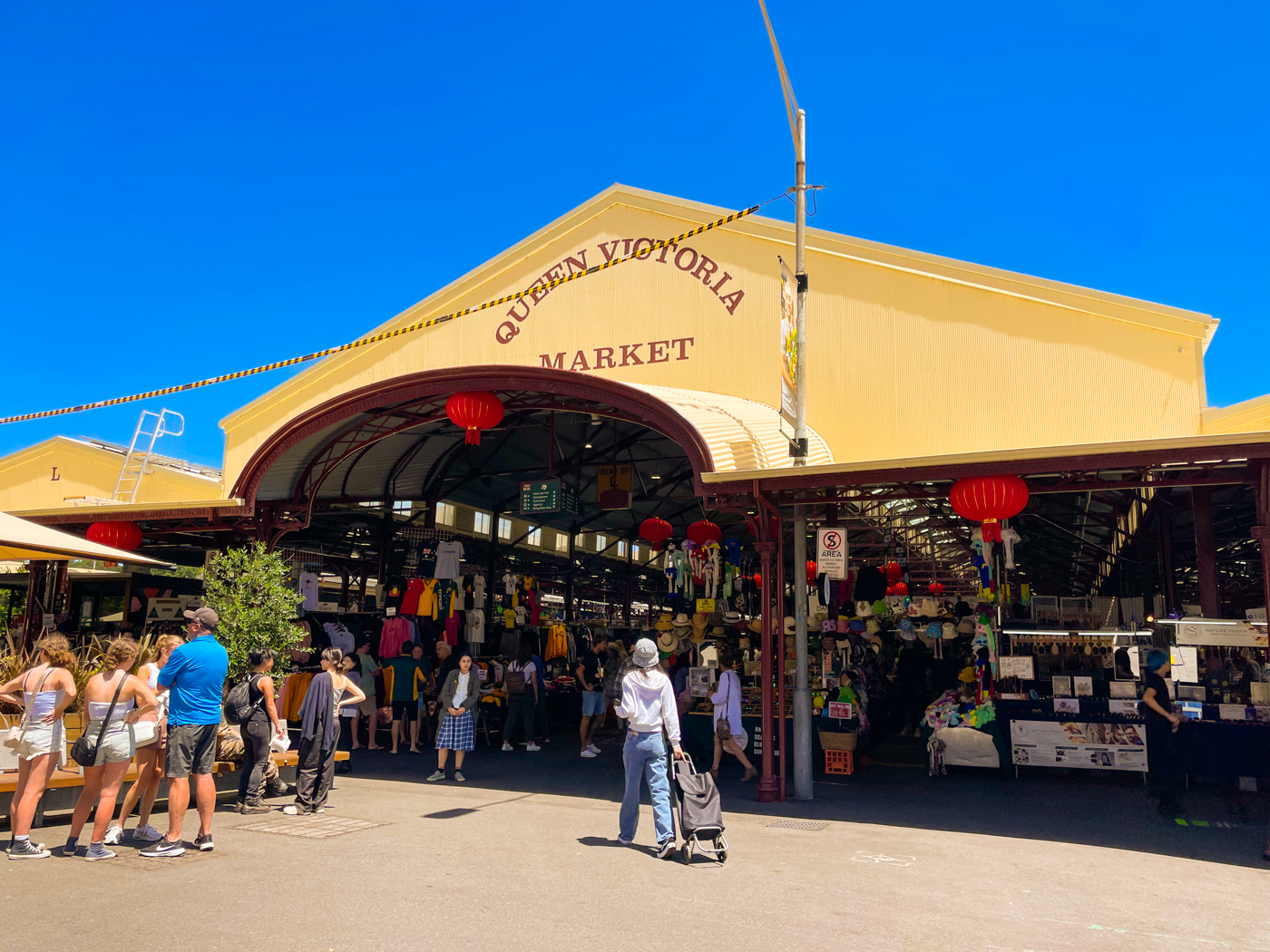
For your very first day in Melbourne, you’re going to be heading to my neck of the woods: the wonderful area that is the inner north. Here’s where you’ll find some of the best street art, food, bars, and shopping in the city.
I may, of course, be a little biased, but let me show what makes this part of the city so great.
First things first, let’s get your day started by heading to the mind-blowing Queen Vic Market! This is one of my favourite places to take first-time visitors to Melbourne because the array of food on offer is seriously impressive.
What else would you expect from a market that’s the size of two city blocks?
The Queen Vic is located on the northern reaches of the CBD, so if that’s where you’ve chosen to base yourself, it’ll be easily walkable from your hotel. It’s best to get here early (by which I mean before 9 a.m.) as the crowds can get intense at times.
In other words: if you visit on a sunny Sunday at midday, you should expect to squeeze your way from stall to stall.
So, what is there to do here? The Queen Victoria Market is an conglomeration of all things food. Wander around the fruit and vegetable section and you’ll find yourself eyeing up the snow-white strawberries and Barbie-pink kiwifruit. Hit up the meat stalls and you’ll be deciding between kangaroo sausages or shark fillets. At the deli counters, you’ll be tempted by local cheeses, olives, and bread; all so fresh and better than anything you’ll find at Coles.
It’s not just produce that’s up for grabs here, however, there’s also a plethora of street food and snacks to sample.
I recommend stopping off at Market Lane Coffee for a Melbourne-quality latte first, then heading to Bratwurst Shop & Co for one of the most popular snacks in town. Cheap and simple, the bratwursts are juicy and flavourful and there’s roughly one hundred toppings and sauces to choose from. If you prefer your breakfasts sweet and meat-free, venture over to the American Doughnut Kitchen for some of the best versions in the city. Gilli has a whole array of sandwiches and pastries to sample if you fancy something a little simpler.
Once you’re suitably fed, it’s time to walk for around 15 minutes east along Victoria Street: we’re heading to Carlton Gardens.

We’re deep in the Carlton suburb now: prepare yourself for students and Italians in equal measure. Yes, if you love your Italian food, you’re going to want to return to this neighbourhood — nicknamed Little Italy — for dinner. On bustling Lygon Street, you’ll find dozens of Italian eateries and gelaterias; it has to be seen to be believed.
But after a visit to the market, the last thing on your mind is going to be food, so let’s take a stroll through the leafy pathways in Carlton Gardens. After a few minutes spent walking north, you’ll come across quite a remarkable building. A UNESCO World Heritage Site, right where you least expect it!
Melbourne’s Royal Exhibition Centre is an icon of the city, and up until recently, you weren’t even able to enter unless you were attending an event within the building. That’s not the case anymore: back in 2022, the Royal Exhibition Centre opened up its dome for the first time in 100 years, and you can now take a tour of it. It’s an amazing building, with beautiful, ornate ceilings and impressive views from the dome. Tours run daily at a price of $29 per person; there’s usually one at 10 a.m. and one at 11 a.m., which ties in well with your itinerary for the day.
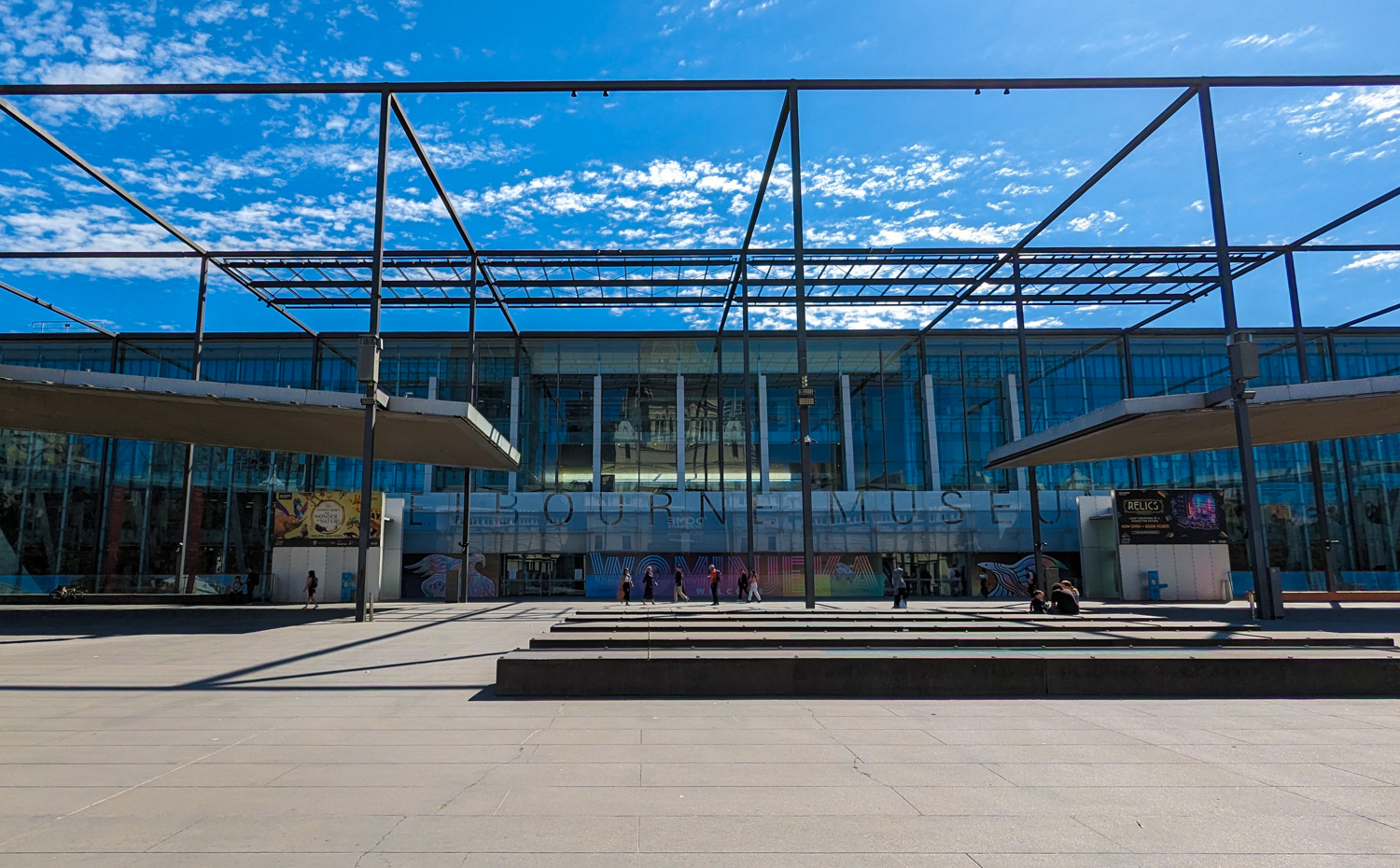
Alongside the Royal Exhibition Centre is the wonderful Melbourne Museum. Did you know that this is the largest museum in the southern hemisphere?
I recommend spending a couple of hours exploring the exhibits here. If you’re travelling with kids, you’ll be particularly impressed, as there’s so many interactive displays for young ones!
You can think of the Melbourne Museum as a blend of history, culture, nature, and science: you’ll be able to immerse yourself in the city’s storied past, starting from the time that settlers first made contact with its Indigenous residents. Next, you could choose to wander through the landscapes of Victoria in the Forest Gallery or learn more about the Pacific Islanders and their watercraft in the Te Pasifika exhibit. You could even see how you measure up against Horridus: their 67 million old Triceratops; the most complete in the world!
If you’re not much of a museum-goer, skip over this step and make your way over to Brunswick Street, in the heart of Fitzroy. This is Melbourne’s epicentre of cool and it’s time to jump in at the deep end.
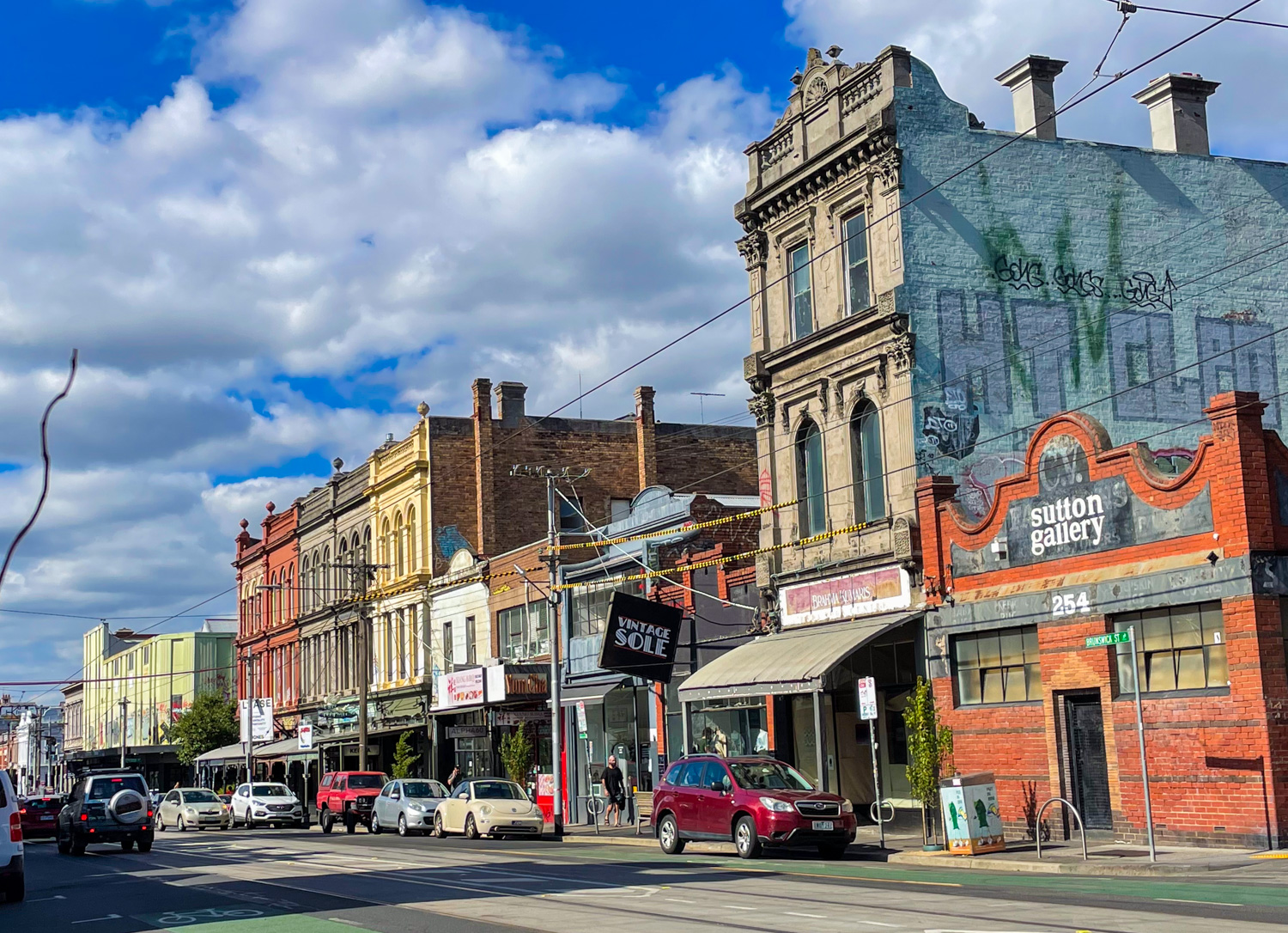
You’ll find some of the best food in the city in Fitzroy, which is home to cuisines as diverse as Afghani, Ethiopian, Colombian, and Tibetan. Not only that, but there’s numerous pubs, high-end cocktails and grungy dive bars (in Fitzroy they coexist!), boutique stores, and fantastic people-watching.
Just don’t expect to see a chain store here: the vast majority of the premises here are one-of-a-kind.
I adore the shopping in Fitzroy, as it’s home to so many unique stores that you can’t find anywhere else in the world. Stop in at Wilkins and Kent for arts, crafts, and souvenirs, head to Kami Paper for some of the most beautiful cards, stationary, postcards, and gifts, or venture into Finer Rings to peruse their beautiful jewellery.
If you’re visiting on a weekend, you must stop in to the Rose Street Artist Market, which is open between 10 a.m. and 4 p.m. and packed full of all of the best products from creatives across the city — I’ve yet to bring anyone here and not have them buy something from one of the stalls!
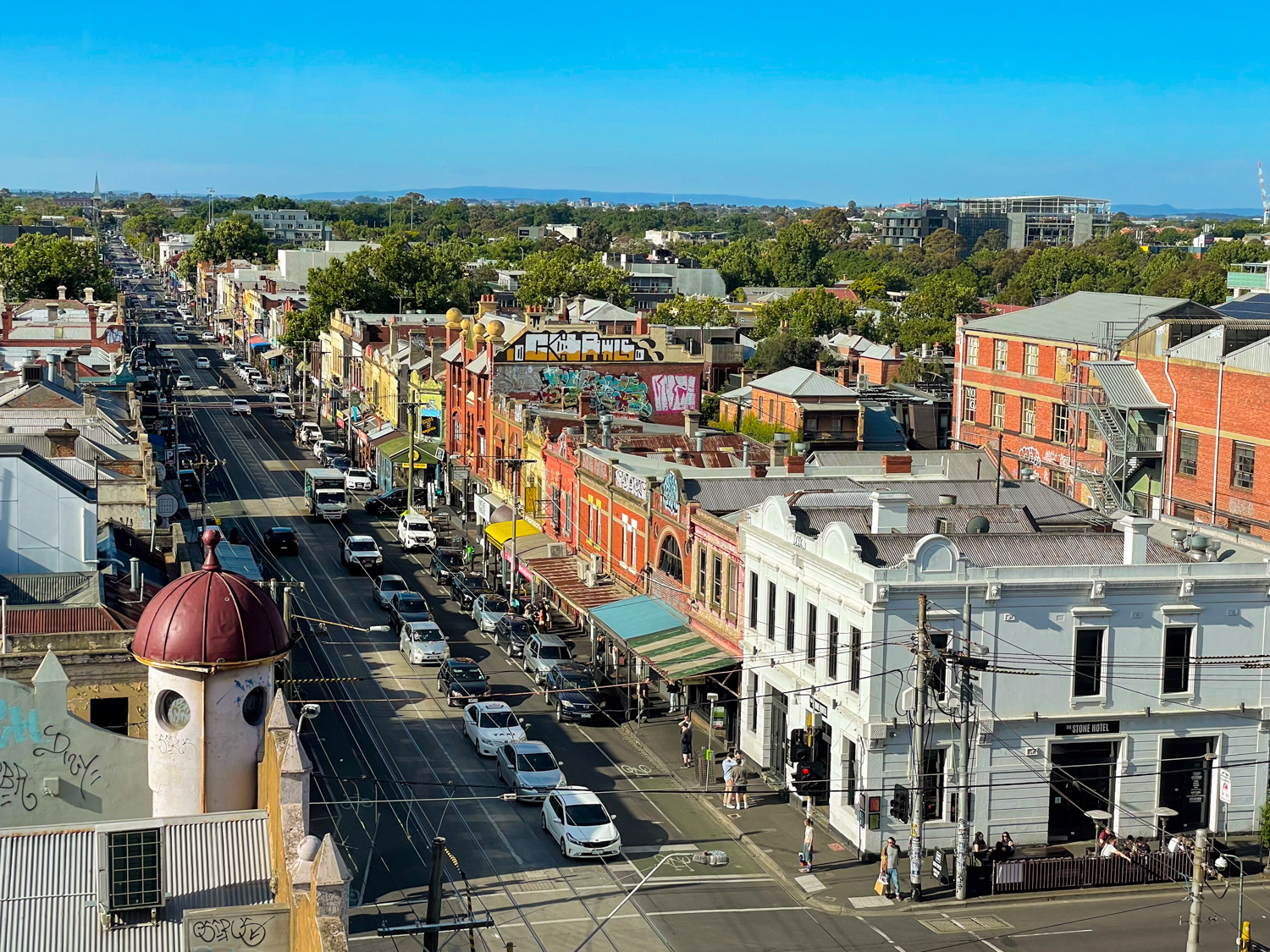
When lunchtime rolls around, you’ll have roughly 200 eateries to choose from, but let me help make the decision-making process a little easier.
If you’re looking to experience something special, head to Naked for Satan: a Fitzroy institution that’s home to one of the best rooftop bars in the city. If it’s a sunny day, soak up the vibes, sample some of the small eats, and sip on a cocktail: on days like these, there’s nowhere else I’d rather be.
Speaking of alcohol, Fitzroy is home to a number of sunny pub gardens, so if you’d rather have a beer and skip the food, hit up the Rainbow or the Standard: both are excellent options for a drink or two.
If you’d rather keep things light, simple, and cheap, we have a full rundown of the best sandwiches in Fitzroy on the site, so do take a look at that for some inspiration. Mile End has excellent build-your-own bagels, Viet Rose offers delectable banh mis, and Jolly Good Sandwiches serves, well, exactly that.
Some of my other favourite restaurants in the neighbourhood include Little Hop for excellent tacos, Vegie Bar for meat-free meals, Sonido for casual South American food, and Elektra for tasty Himalayan curries.
Once you’re well-fed and ready to move on, it’s time to venture south to one of Australia’s most legendary sporting venues.
It’s a 35 minute walk from Fitzroy to the MCG, and a pleasant one, as you’ll wander down the length of colourful Brunswick Street, pass through tranquil Fitzroy Gardens, and then you’ll be there: outside the most beloved stadium in Melbourne.
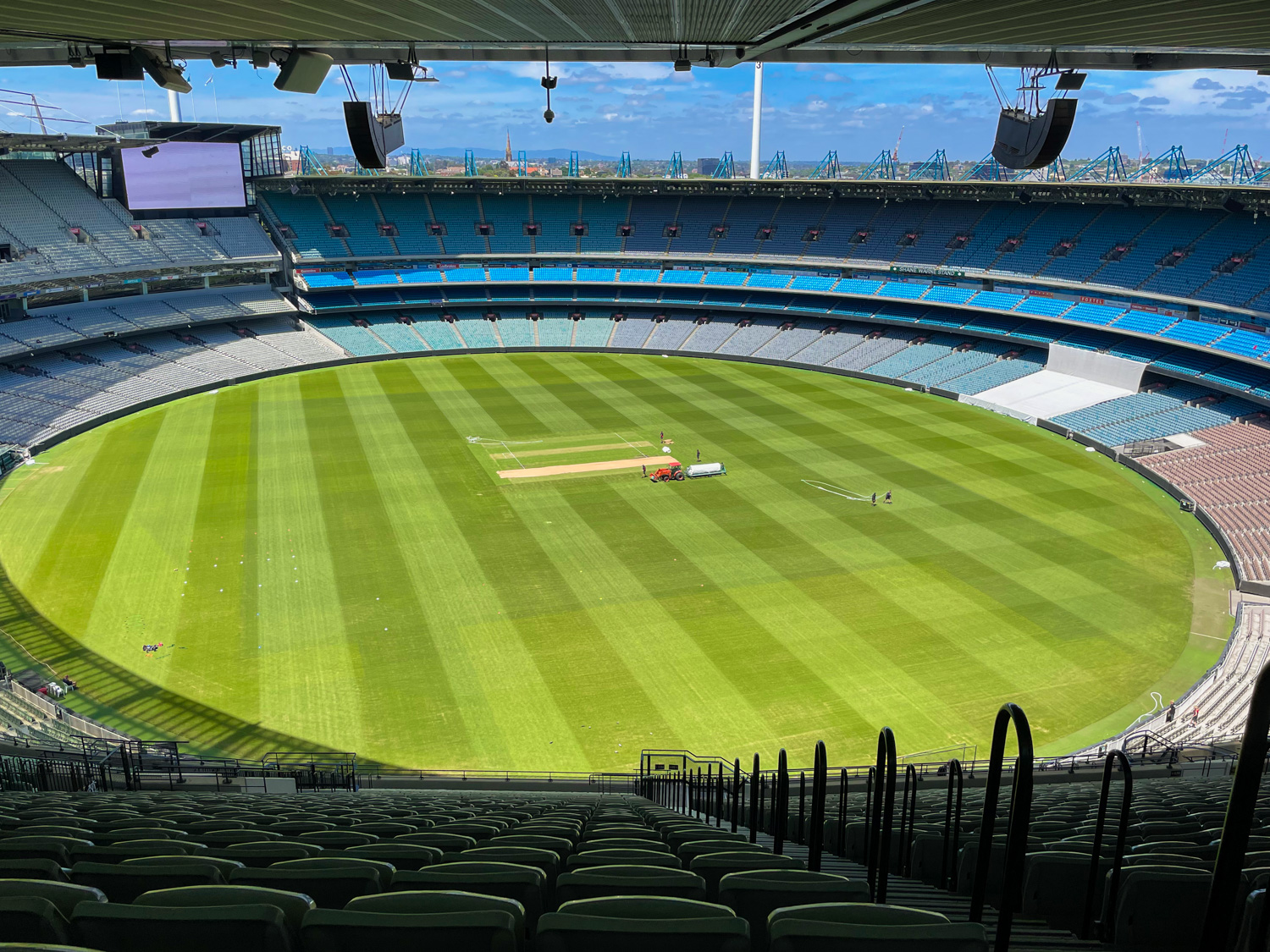
Keep on walking — walk inside — because it’s time to jump on an activity that I emphatically promote to everybody who comes to visit me in Melbourne: a tour of the MCG.
Yes, even if you’re not a sports fan.
Because if there’s one thing you need to know about Melbourne, it’s that this city loves its sports.
You’ve got the Australian Open, which is held here every January, along with the Australian Grand Prix, which gets kicked off in March. There’s the Melbourne Cup — the most prestigious horse race in the country — plus the Cricket Boxing Day Test and AFL Grand Final; two of Australia’s biggest sporting events.
Melburnians view the MCG — the Melbourne Cricket Ground — as their most hallowed stadium, which is all it takes to make it a must-see, in my opinion. If you happen to time your visit with a sporting event (AFL runs from March to September; cricket between December and February), try to get your hands on some tickets. The MCG is the 11th largest stadium in the world, holding more than 100,000 people. As you can imagine, the atmosphere at the most popular games is electrifying.
Guided tours of the MCG are excellent. I signed up for one when my cricket-loving dad came out to Melbourne to visit me and we both agreed that it was one of the highlights of the trip. But don’t just take it from us: my mum is the least sporting person you’ll ever meet and even she named it as one of her favourite Melbourne activities!
On your tour, you’ll get to walk all around the stadium — my photo above was taken from the highest seat in the ground — learning about the sports and history that have made this place so famous. We uncovered little-known facts about the games that have been held here, got to stand on the grass and gaze up at the vast stands, wandered through the Long Room and the players’ rooms, and even visited the media centre!
Attached to the MCG is the Australian Sports Museum, which is definitely worth a look if you’re a fan of all things green and gold. There, you’ll find plentiful artefacts and memorabilia, covering a whole range of sports from athletics to rugby, cricket to AFL, swimming to tennis, and so much more. There’s tons of interactive exhibitions and games to play here, so this is a particularly great option if you’re travelling with kids! Expect to spend at least a couple of hours here.
Melbourne is quite unusual in that many of its major sporting stadiums are located within a tightly-knit cluster that makes all of them walkable from each other.
If you’re a tennis fan, for example, taking a guided tour of the Rod Laver Arena is probably on your sporting bucket list. Tours run at 11:30 and 1:00 pm every day there, with no advance booking required.
You could even put together your very own walking tour around the area, if you like: strolling from the MCG to the Rod Laver Arena to the Margaret Court Arena to the John McCain Arena to AAMI Park. Here, there’s so much sporting history to surround yourself with.
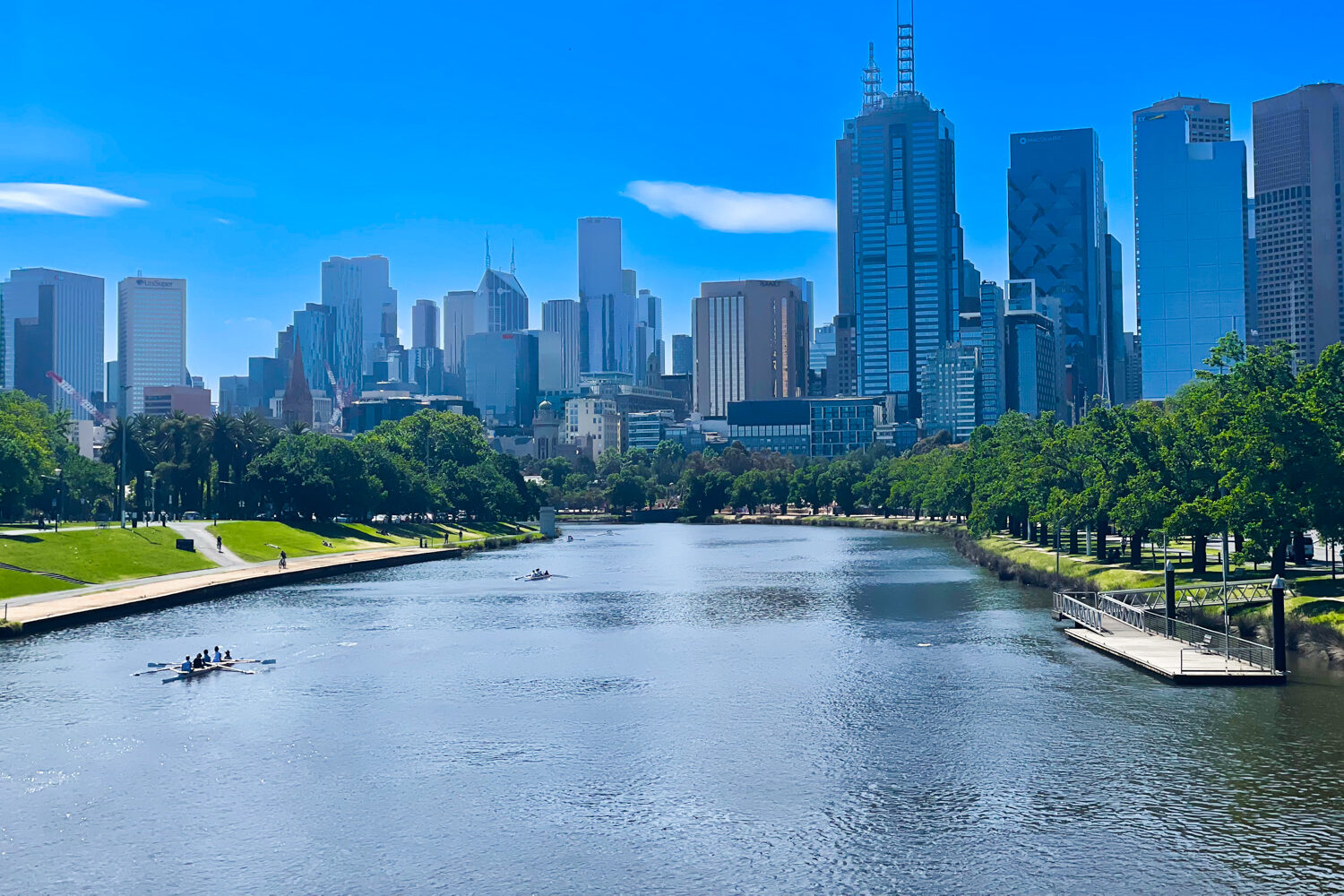
The stadiums are all located adjacent to the Yarra River, which is one of my favourite parts of the city to take a walk. It makes perfect sense, then, to round out your day by walking alongside the river back into the CBD.
It only takes 20 minutes to make your way back to your starting point so take your time here: you’ll see plenty of kayakers out on the water, joggers and cyclists tackling the wide walkways, and locals picnicking on the grassy verges. Bars and restaurants line the route as you near the CBD, so pop in for a drink if you find them calling to you.
Day Two: The South of the River
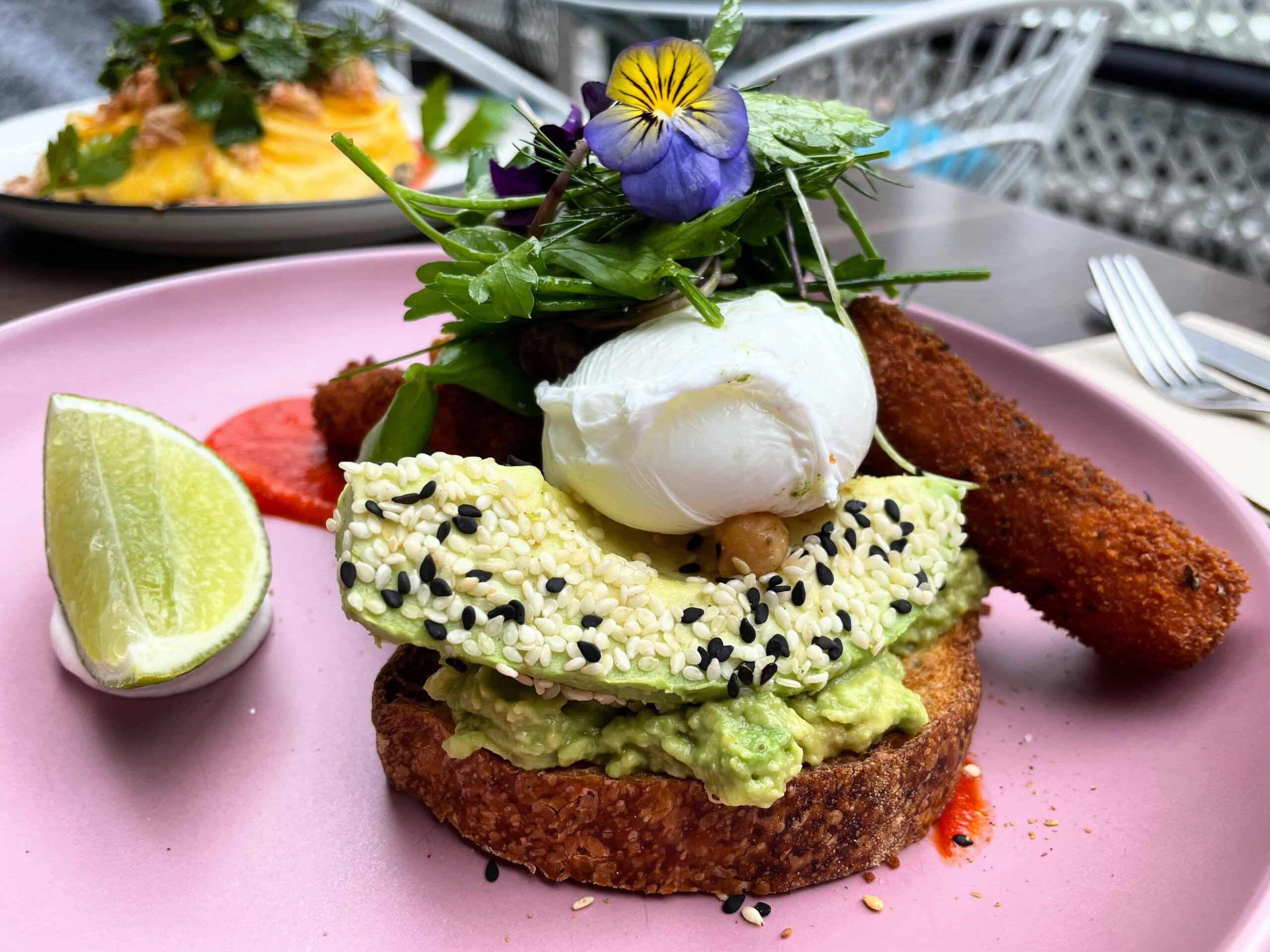
It’s your second day in the city and we’re going to spend our time south of the river: today, we’re going to see what’s so special about the other side of Melbourne.
A quick warning that today has the potential to involve a fair bit of walking so be sure to wear your sturdiest shoes. If you’re not down for lots of exercise, it’s all good: I’ll be sharing the best public transport options to help cut down on walking time — and there’s always Uber.
We’ll start today by taking a ride on the number 58 tram, which runs from the CBD to South Yarra. The stop you want to get off at is called 50 Toorak Road/Chapel St. Once you disembark, you’ll find yourself in the heart of South Yarra’s most happening area. Chapel Street is where the southsiders come to eat well, shop well, then party well.
We’re here for the first of those items. Head to the Peacock for your first sampling of South Yarra food. The breakfasts here are some of the best in the neighbourhood. From blueberry honeycomb hotcakes to okonomiyaki omelettes: there should be something that’ll take your fancy here.
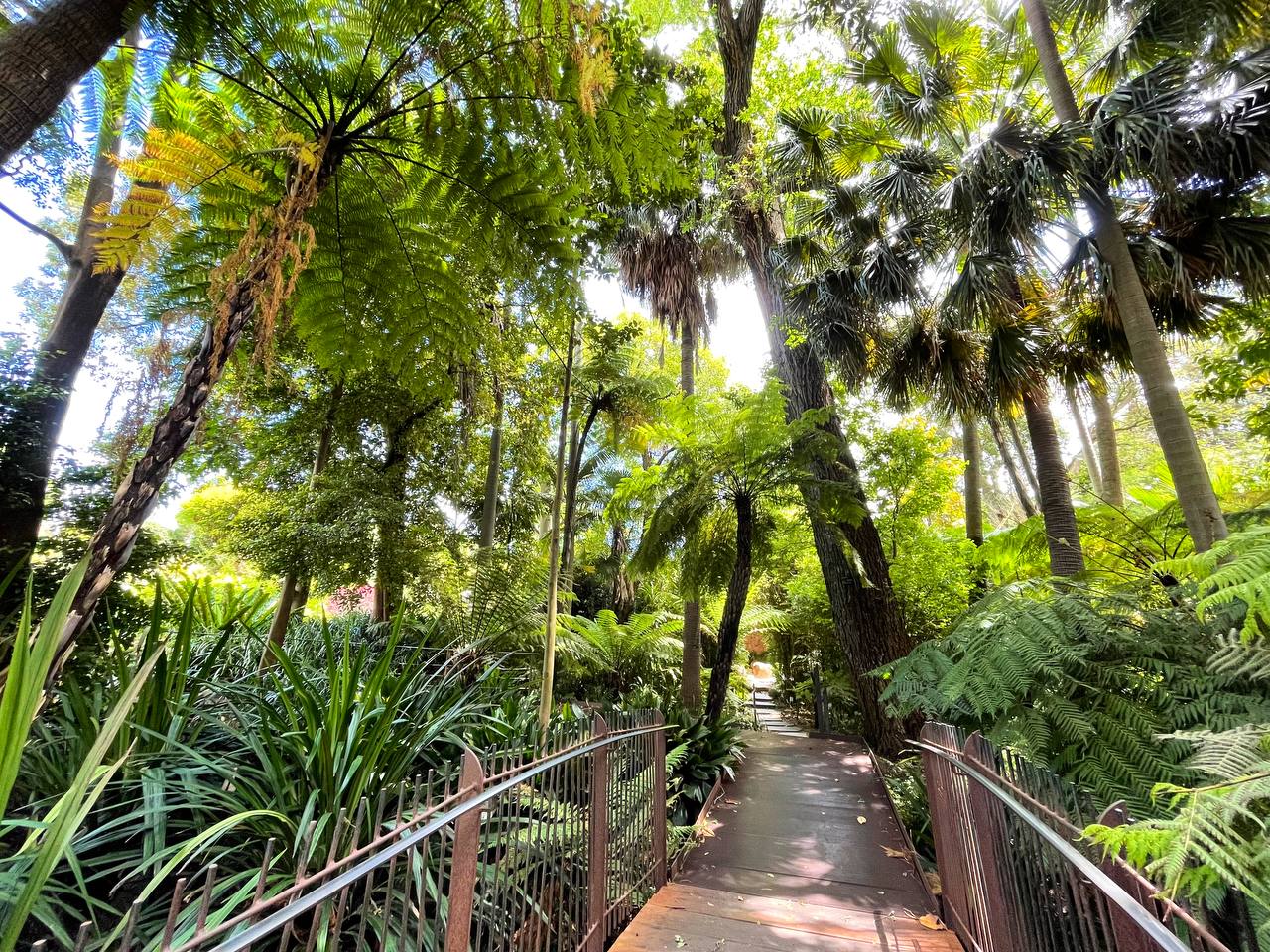
Once you’re ready to get moving again, make your way over to Melbourne’s Royal Botanic Gardens. Feel free to take an Uber over to the gardens if you want to save your exertion for later: take it to the corner of Anderson Street and Alexander Ave.
If you’re still keen for a walk, then venture north from the Peacock until you meet the Yarra. Turn left and walk alongside the river until you reach the Botanic Gardens. The 2 km walk should take no longer than 25 minutes to complete. Keep your eyes peeled as you go: you’re on the opposite side of the bank to the previous day and yes, those are the MCG floodlights in the distance!
Melbourne’s Royal Botanic Gardens are a delight to wander around, so aim to spend at least an hour absorbing this precious green space. Feel free to take a look at the map at the entrance and devise your own route to the plants and regions that interest you the most, or keep on reading and I’ll outline my favourite parts of the complex.
You’ll be entering at Gate A, so keep walking straight until you reach the Ornamental Lake. From there, look for signs pointing you to Guilfoyle’s Volcano — that and the Arid Garden are two of my favourite parts of the complex. Continue onwards through the Australian Forest Walk, the New Zealand collection, then turn right to end up at Fern Gully. Finish off your explorations by walking out to Gate F via the Southern Africa Collection.
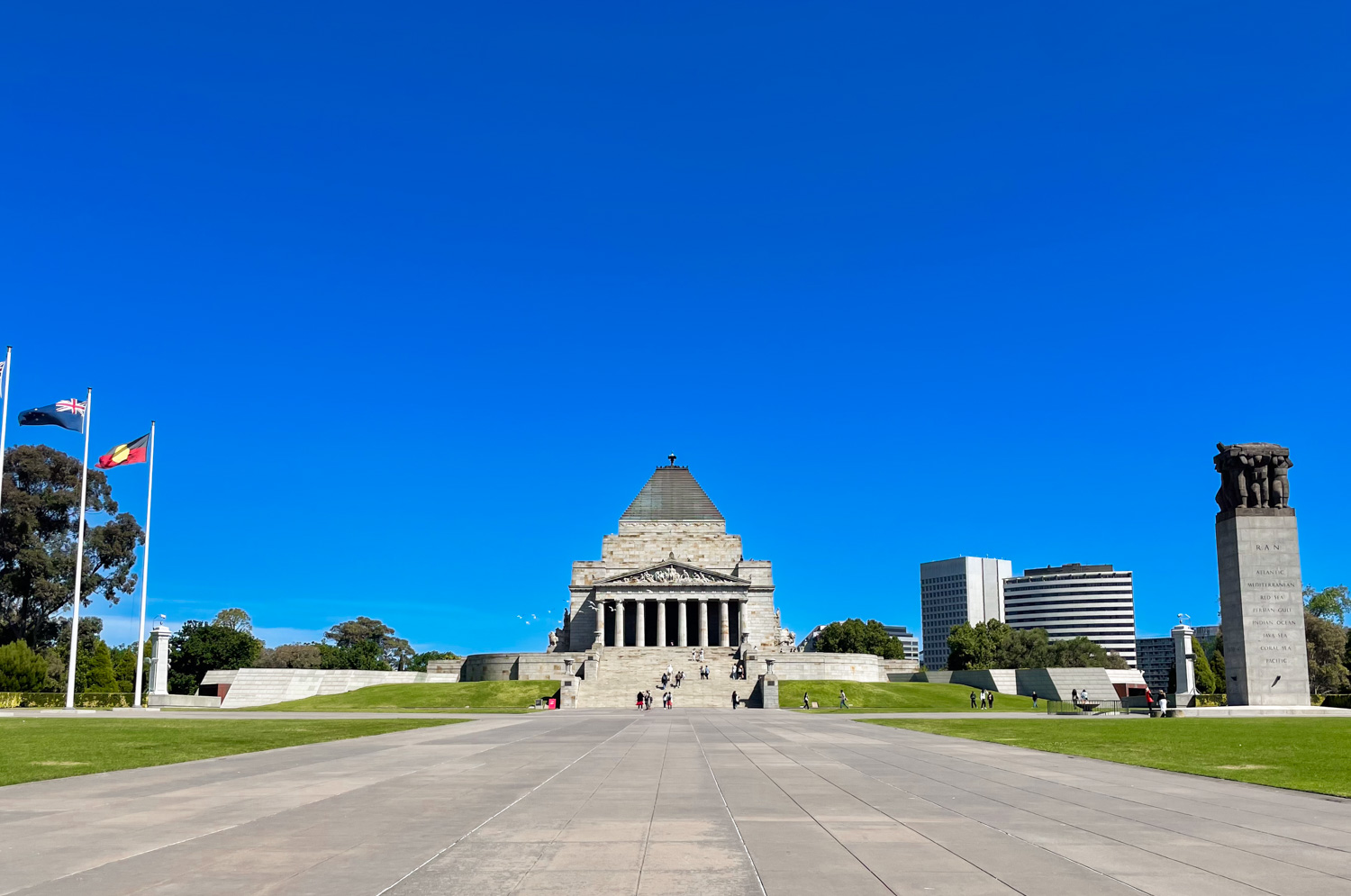
When you exit the garden, set your mapping app to direct you to the Shrine of Remembrance, which is only around 100 metres away. This is one of my favourite places to take visitors, because there you were: hanging out amongst the greenery, and here you now are: suddenly in Rome?
I don’t know, the Shrine of Remembrance is simply grand. It always makes me feel like I’m back in Europe, almost, admiring its historical structures. The Shrine was originally built to honour the men and women who fought in World War I, but it now functions as a general memorial to all Australian soldiers. It was actually the first war memorial to be built in the country!
There’s quite a bit to the area, so aim to spend at least half an hour here. Start on the exterior, by paying your respects at the cenotaph and Eternal Flame, then meander down the pathways and across the parkland to take photos from afar. A lot of people don’t realise that you can actually enter the Shrine of Remembrance; in fact, it has loads to see inside. There’s the Gallery of Remembrance, which is lined with 4,000 war medals, and there’s artefacts and stories from every war that Australians have participated in. There’s even an original lifeboat that was used during the landing at Anzac Cove during the Gallipoli Campaign.
Needless to say, there’s lots to peruse here, but if war history isn’t your kind of jam, it’s still worth entering to visit the Shrine’s terrace. Yes, you can actually climb to the top of the structure and look out across the city — the views are wonderful from up there.
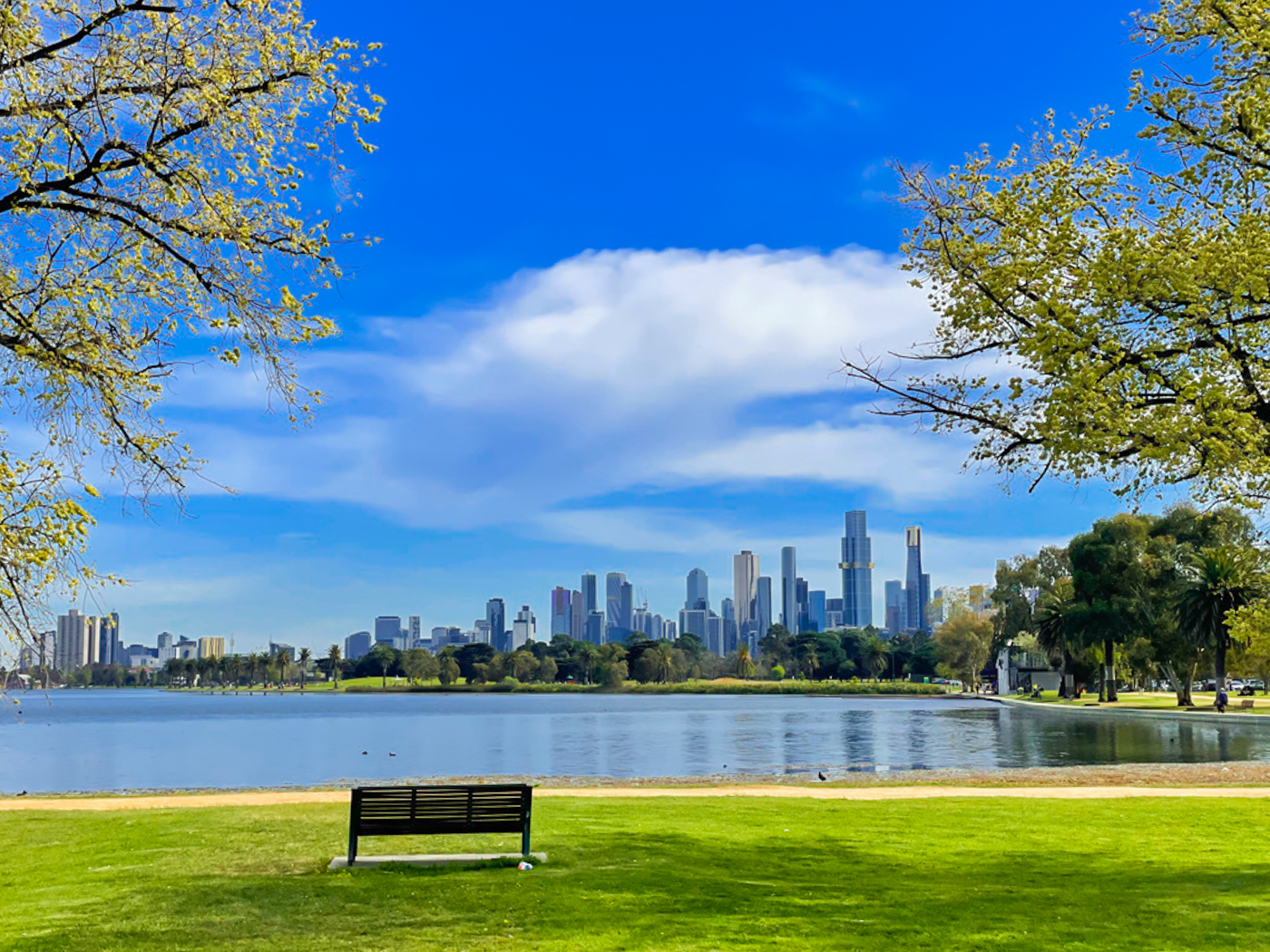
From the Shrine of Remembrance, it’s a cruisy 15 minute walk to Albert Park Lake, which is my favourite park in all of Melbourne. I love it for the beautiful views of the city skyline, however if you’re a Formula 1 fan, you’ll have probably already heard of Albert Park: it plays host to the Australian Grand Prix every single March. Unexpectedly, you can walk — or drive — along the actual race route when there isn’t one going on!
There’s a scenic walking loop that encompasses the lake and which runs for 5 kilometres, or 3 miles, and takes about an hour to complete. If you want to focus your explorations on this beautiful park then feel free to take the time to complete the entire circle — if you’re going to do this, I recommend walking in a counter-clockwise direction for better views.

For this itinerary, however — given we have more walking in our future! — I recommend walking just half-way around the lake, from top to bottom, as this will give you a good feel for the park and still reward you with impeccable views. Once you arrive at the waterfront, I recommend walking clockwise down Lakeside Drive. This is the prettiest side of the lake, as it’s lined with palm trees, which make for a particularly tropical vibe.
One thing to keep in mind, however, is that you’ll be walking away from the CBD, which means that you should regularly take a look behind you as you go — the palm trees in front of the city skyscrapers, which is pictured above, makes for a particularly scenic view.
Make sure you stop to admire the view from the Lakeside Lookout — it’s marked on Google Maps — as that’s the best viewpoint of the park. It where I took my photo of the bench at the top of this section.
With Albert Park now under our belts, it’s now time to head into St. Kilda for a beautiful lunch. Given that it’s a 30 minute walk to get there, I’d suggest taking an Uber to save some time. Alternatively, you could also take the number 16 tram from the park to the water.

I have two options for lunch today: one is for good food and one is for good vibes.
The Lady of St Kilda is my favourite spot in the neighbourhood. It’s an epic Mediterranean eatery, where you can be guaranteed to sample excellent pita, hummus, salads, and dips. My favourite dish is pictured above: the Good Morning Istanbul, with sesame pita, roasted lamb, tzatziki, and a side of salad. The food is always so fresh and so interesting here; I can’t get enough!
Alternatively, you might want to opt for food and wine beside the sand.
In that case, you’ll want to head to Republica. This St Kilda icon first opened its doors in 1980 and has remained popular ever since. The food isn’t amazing here, but the location absolutely is. You’ll be sitting beside the busy boardwalk, looking out towards the ocean, and soaking up the beachy atmosphere.

With lunch done and dusted, it’s time to turn our attention towards St Kilda: Melbourne’s most popular beachside suburb. As we explore, we’ll be strolling the lengthy boardwalk, which runs for 11 km, or 7 miles along the coast. Truly, you could spend all day walking beside the sand if you felt like it.
We’ll head first to St Kilda’s Pier, which dates back to the 1800s, subsequently giving it quite a British seaside-feel. It’s most well-known, however, for being home to a colony of 1400 little penguins. Every night at sunset, they emerge from the water and make their way home for the night — you can sit on the pier and watch it all take place. As I write this in January 2024, the penguin-viewing part of the pier is closed for renovations, but it should be operational again within the next couple of months.
Moving on, two of St Kilda’s most famous attractions are the Palais Theatre and Luna Park.
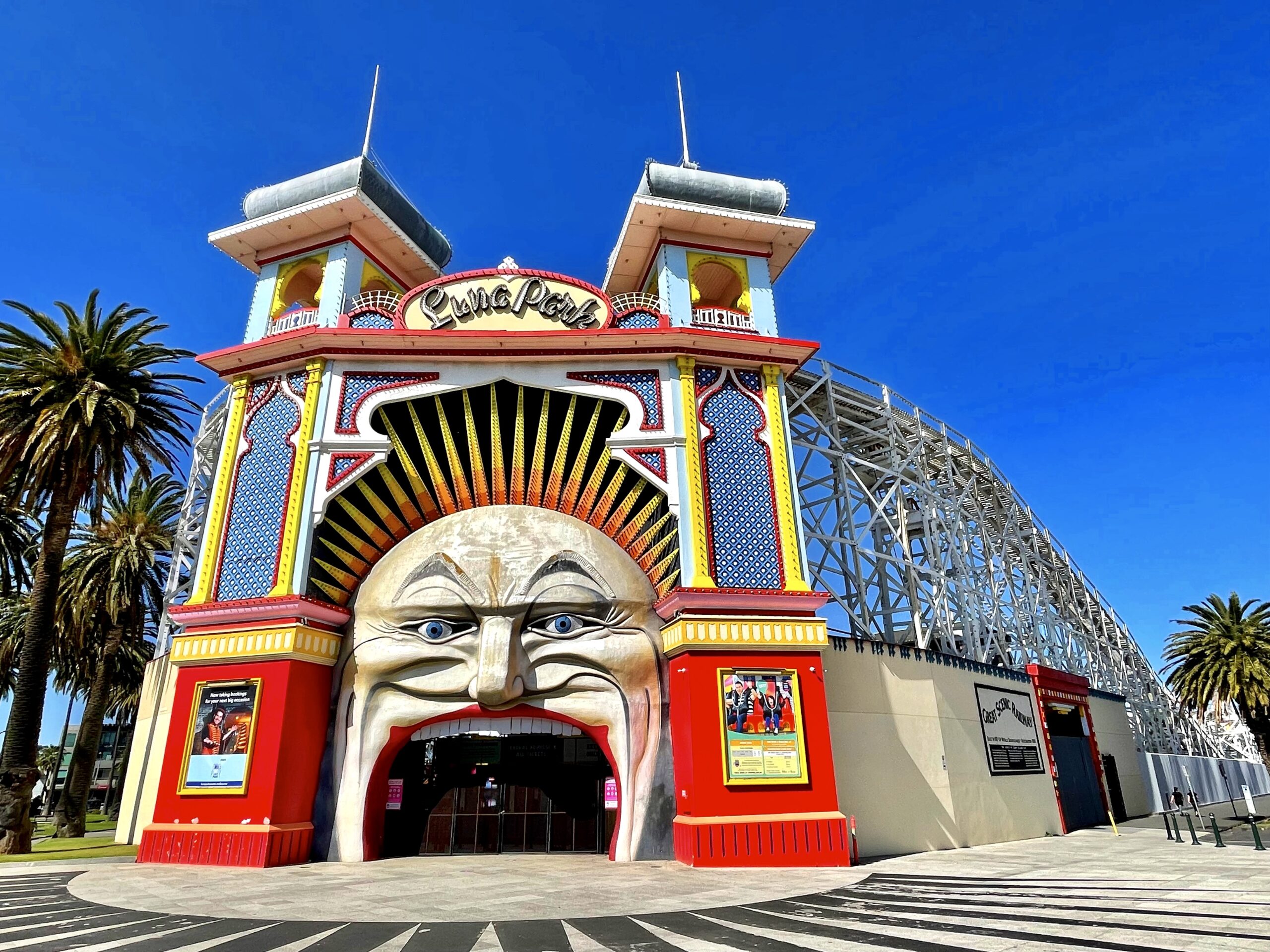
Luna Park is an amusement park that’s home to one of the oldest rollercoasters in the world. Said rollercoaster actually follows a track that’s built atop the perimeter of the complex — you can see that in my photo above. Amazingly, the rollercoaster is still operated by hand! You’ll have an operator standing at the back of the car, manually controlling the brakes as you go around.
If you’re travelling with kids or love yourself an amusement park, you can buy tickets online — entry plus unlimited rides comes in at A$55, so it is a bit pricey. However, I can’t deny that I’ve spent many hours of my life enjoying these rides — they’re a lot of fun. Alternatively, stand outside the entrance to the park and wait for the rollercoaster to pass by — it makes for a great shot when it happens.
Beside Luna Park, you’ll find the Palais Theatre. This live music venue has seen performers like the Rolling Stones, Tom Jones, and Shirley Bassey play here — not bad for a venue that holds less than 3,000 people! I actually saw a Tim Minchin concert here a few years ago and it was so much fun!
The art deco design of the Palais Theatre blends perfectly with that of Luna Park, in my opinion, so take a few moments to admire the pair of them.

One of my favourite walks is the 2 kilometre (1.2 miles) beachside trail from St Kilda to Elwood. Specifically, to the Point Ormond Lookout. As you can see from my photo, it really does serve up an incredible view of the city.
The walk itself is a beauty, winding its way along the coastline, with a path wide enough for walkers, joggers, cyclists, and pram-wielders to pass each other by. On a sunny day, the path fills with friends and families, all taking advantage of the picture-perfect views.
When you get to Point Ormond Lookout, take your photos and then you have the option to turn around and walk back into St Kilda. Alternatively, you could head to one of the most Instagram-famous sights of Melbourne.

Because have you really been to Melbourne if you haven’t had your photo taken in front of the Australia beach box?
Brighton is quite a way from Elwood — a further 4 km (2.5 miles) onwards from the viewpoint — so I’d probably recommend taking an Uber to get there. There are also buses running up and down the main road; you’ll want to take the number 600, 922, or 923. Get on at the Glen Huntly Road/Broadway intersection and hop off at Railway Ave/New St stop. From there, you’ll be a two minute walk from the boxes.
So what is it that’s so special about the Brighton Beach Boxes?
Quite simply, it’s their photogenic nature, The boxes are all painted in different colours and designs, with the Australian flag one being the most popular. Fun fact: they’re also some of the most expensive beach boxes in the world, selling for as much as A$350,000 for one of the teeny-tiny shelters.
If you’re lucky, you might time your visit with one of the beach box owners and get to have a peek inside one of the spaces. They’re usually well-decorated and cute, although (obviously) extremely small.
Keep in mind that this area of Melbourne is busy with tourists, so it’s unlikely you’ll be able to get a photo of you without anybody else in the shot — but if you’re happy to wait half an hour, you’ll probably be able to get close.
And that’s the end of the tourist activities for day two in Melbourne. At this stage, you could take an Uber or a tram back to your hotel to freshen up, or head back to St Kilda to get dinner and check out the nightlife.
Day Three: All of the Tourist Attractions in the CBD
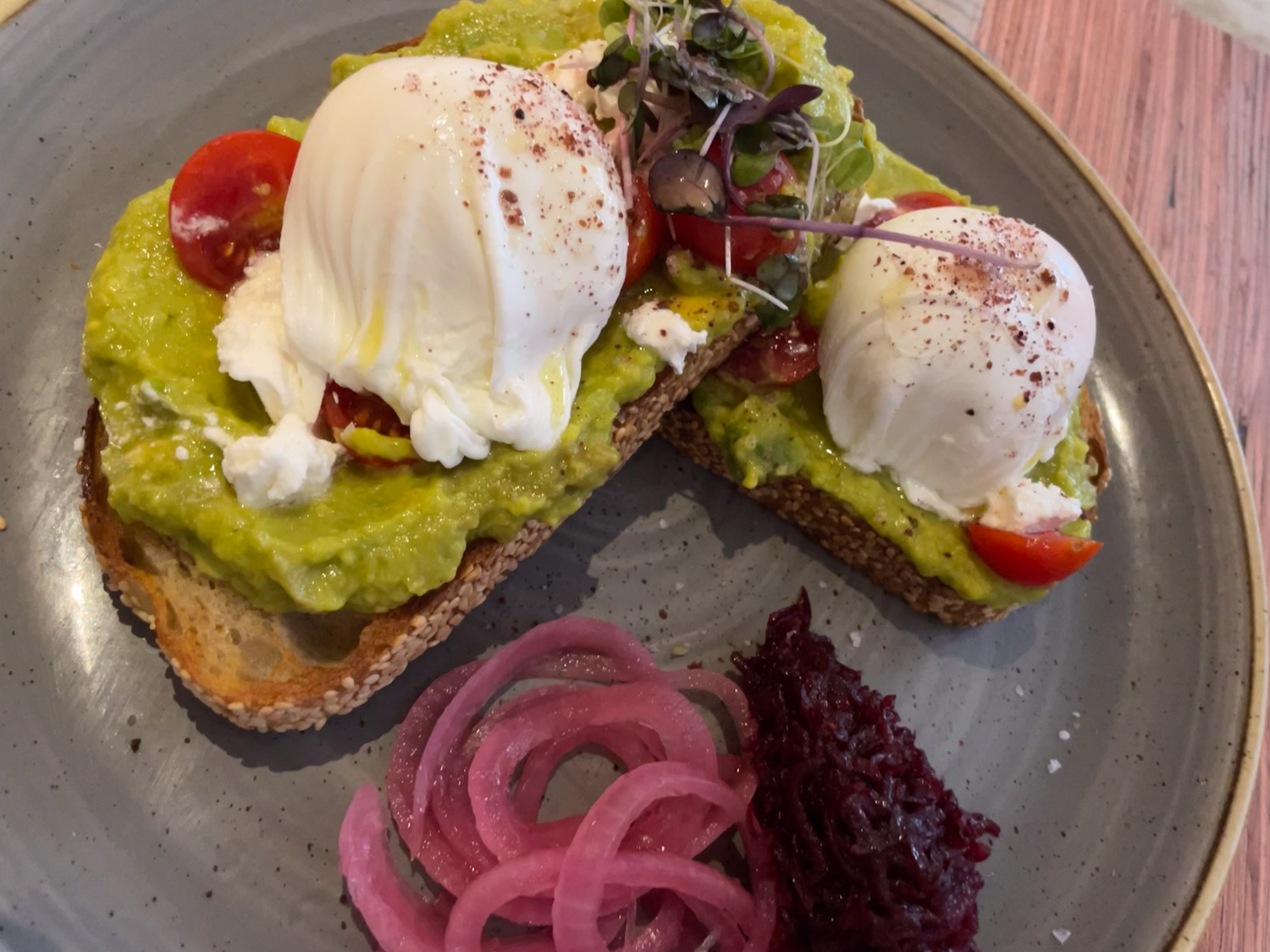
We’re going to be spending the entirety of today in and around the CBD, so let’s kick things off with a breakfast in the city. I recommend heading to Brick Lane Melbourne (33 Guildford Lane), which is located down one of Melbourne’s famously aesthetic laneways.
The smashed avo is a great option if you’re looking for something fresh, while the chilli eggs are packed full of flavour and the baba ganoush is delightfully smoky. If you prefer your breakfasts sweet, the waffles are excellent.
Once you’re fed and full, it’s time to dive into Melbourne’s cultural side.

The Melbourne Gaol is three blocks from Brick Lane, so it makes for a logical place to start your explorations.
The Gaol commenced operations in 1842 and functioned for over eight decades, witnessing the execution over 130 of the nation’s most notorious criminals, including the one and only Ned Kelly.
Despite the steep cost of A$35 for admission, I personally found the experience well worth the expense. Inside the the prison cells, informative boards detail the stories of those incarcerated, their crimes, and the harsh realities of life within the cramped, dark cells.
The most unsettling for me was the sight of the death masks of the inmates. In an era predating photography, it was customary to create plaster moulds of the faces of executed prisoners, and a collection of these eerie artefacts can be seen in the gaol today.

Just one block away from the Melbourne Gaol is one of the most beautiful buildings in the city: the Victoria State Library. It takes just a couple of minutes to walk there.
Once you enter the complex, you’ll want to follow the signs to the Dome, as that’s where you’ll find the lifts that will take you up to the famous viewing platform. The pleasing symmetry makes this an excellent place to take photos, and it’s rarely busy, either.

We’ll venture next to Melbourne’s arcades. If you like shopping and beautiful architecture, this is going to be an exciting stop for you.
The city’s arcades date back to 1870, so feel like a particularly impressive place to get your souvenir-shopping done. Each of the arcades have their own unique design, so it’s well-worth stopping in two or three of them to admire the ornate structures.
From the State Library, walk first to the Royal Arcade, then the Block Arcade, and finish with the Cathedral Arcade (bizarrely marked on Google Maps as Cathedral Coffee). All three arcades have a distinct interior design and interesting shops and cafes to stop in.
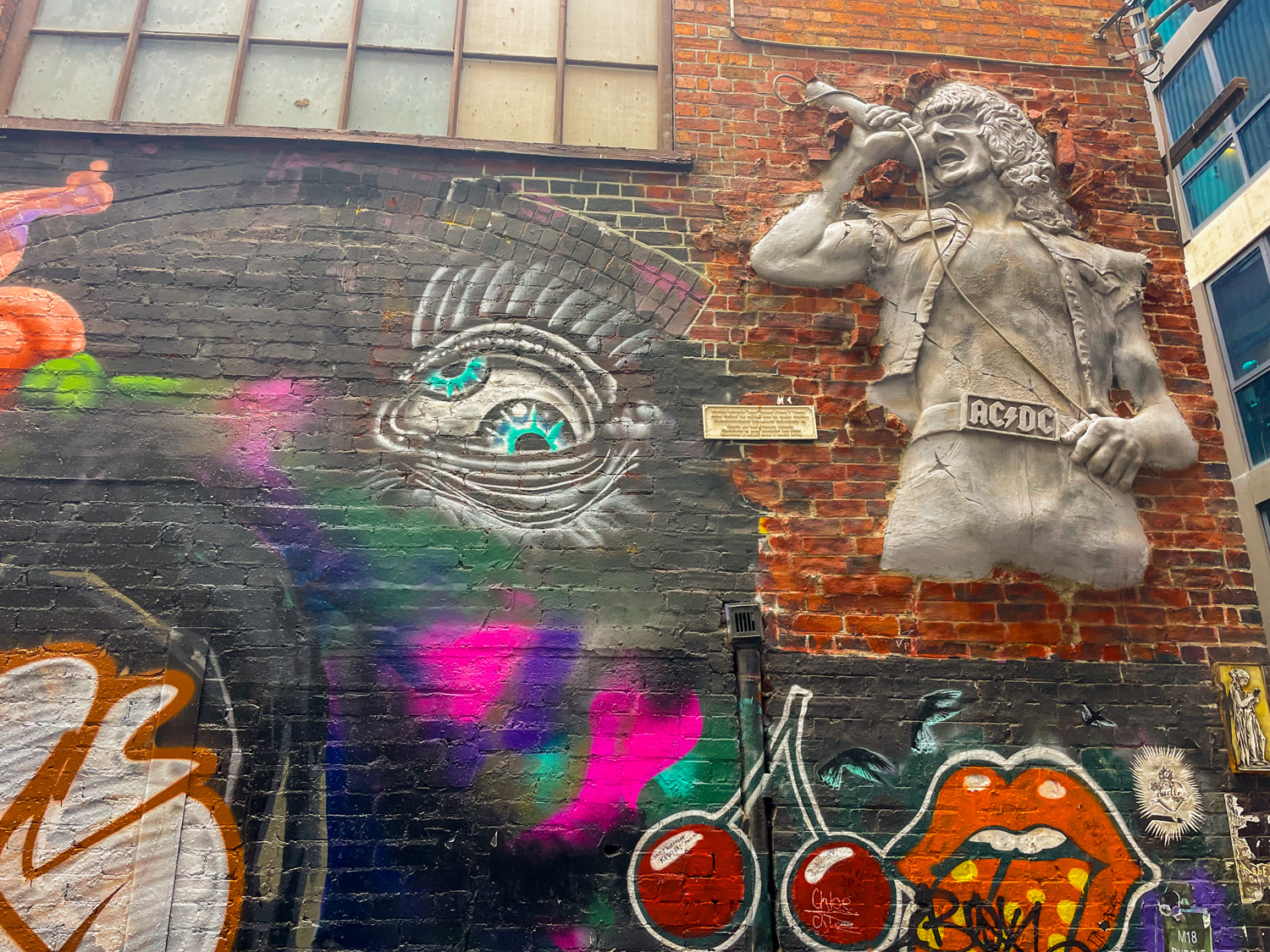
We’ll be moving next from the grandeur of the arcades to the grunginess of the laneways. Because in addition to being one of the best cities in the world for coffee, Melbourne is also known for being home to some of the best street art.
The laneways of the CBD are where you’ll find an eclectic mish-mash of the city’s artists exhibits. Some of the best streets to head to are AC/DC Lane, Hosier Lane, and Duckboard Place — that last one is home to the city’s only remaining Banksy.

We’ll finish off our morning of explorations by swinging by Flinders Street Station and Federation Square.
When it comes to city icons, Flinders Street Station is exactly that. This is the oldest train station in Australia, and the busiest in the southern hemisphere. Despite that, a visit is never too stressful, as there’s plenty of space to spread out and take your own photo.
Fun fact: the clocks that you see above the steps are still the originals from 1854. Back when they were first installed, workers still had to manually change the time on them! Equipped with a long pole, they would move the hands of the clock every thirty seconds to ensure that commuters were always aware of the time.
Federation Square is up next and you can think of this area as the town square of Melbourne. There’s often something going on here, whether it’s a festival, a market, a concert, or an art installation.
When it comes to lunch, I recommend walking over to the Arbory, a large, outdoor riverside restaurant that’s popular with locals. There’s probably a hundred tables outside, so it’s usually easy to get a space, even on a sunny weekend, and the food is delicious.
Afternoon: It’s All About the Museums
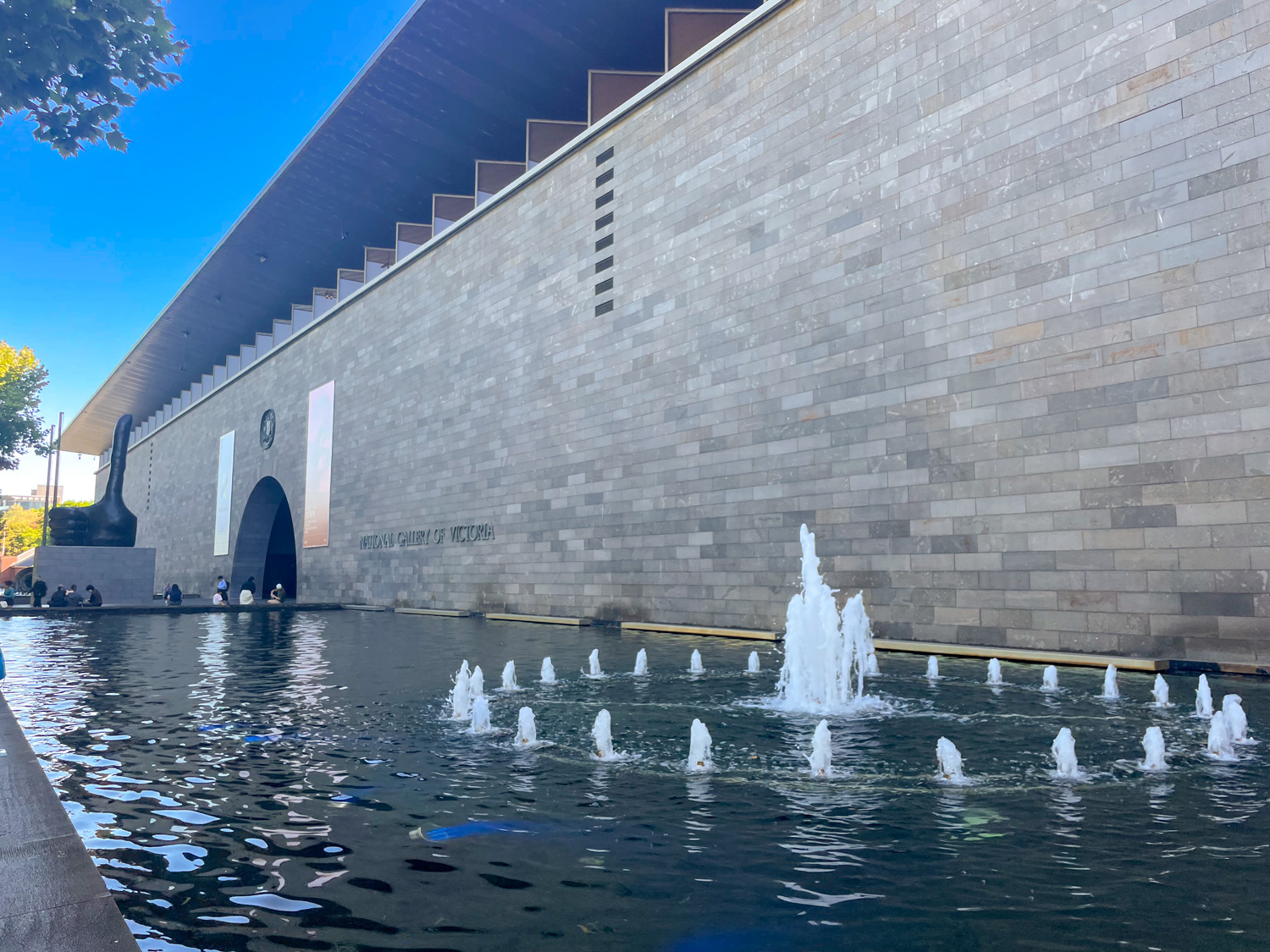
Melbourne is home to several excellent museums and I’d recommend visiting at least one of them while you’re in town. These are the two I recommend most:
The Immigration Museum provides a wonderful, thought-provoking way to spend a couple of hours. Detailing the stories and experiences of the people who decided to leave their lives in order make Australia their home, their vulnerability will make you laugh, cry, and most importantly, reflect. Melbourne is a city that’s jam-packed with immigrants and you’ll learn about their lives while also focusing on how their presence has impacted the country’s indigenous people (spoiler: not positively).
Another option for a museum is the National Gallery of Victoria, which is Australia’s most-visited art museum. There, you’ll find pieces from Picasso, Rembrandt, and Turner, as well as plenty of contemporary artwork. It’s totally free to visit, which is impressive, so it’s well-worth taking a look — expect to spend at least three hours exploring the large complex.
Finish off your day in the CBD by heading to the Melbourne Skydeck, at the top of the Eureka Tower. At almost 300 metres in height, this is the highest observation deck in the entirety of the southern hemisphere — and is also home to the fastest lift in the southern hemisphere! Unsurprisingly, it offers some pretty amazing views of the city.
You can buy tickets online at a discount, or turn up on the day if you’re unsure about the weather. Once you get the top, there’s lots to keep you entertained.
First, of course, you have the observation deck itself: 360 degree views of the city that stretch out for miles. There’s also the Edge, which is a glass box that extends beyond the walls of the building, enabling you to look alllllll the way down to the ground. There’s plenty of other add-ons, too, like an immersive VR film in 6D, at the Voyager Theatre, or a cocktail-in-the-clouds experience at the excellent Bar 88.
For a special experience, opt to have dinner at Eureka 89: the high-end restaurant that’s located one floor above the Skydeck. As an added bonus, guests of the restaurants get free access to the Skydeck, making the experience less expensive overall.
There’s just one more thing I want to discuss.
There is an Option for a Day Trip
As I mentioned in the introduction, I feel that three days is the perfect amount of time to spend in Melbourne.
You’ll be able to dive into the city’s history in the CBD, its grungy coffee scene in the north and its beachy glam in the south.
But I’m also aware that the vast majority of visitors to Melbourne love to squeeze a day trip into their itinerary. After all, could you imagine coming all the way to Victoria and not taking a trip out on the Great Ocean Road?
If that sounds like a travel crime to you, then I’ve written the next section to absolve me of my sins.
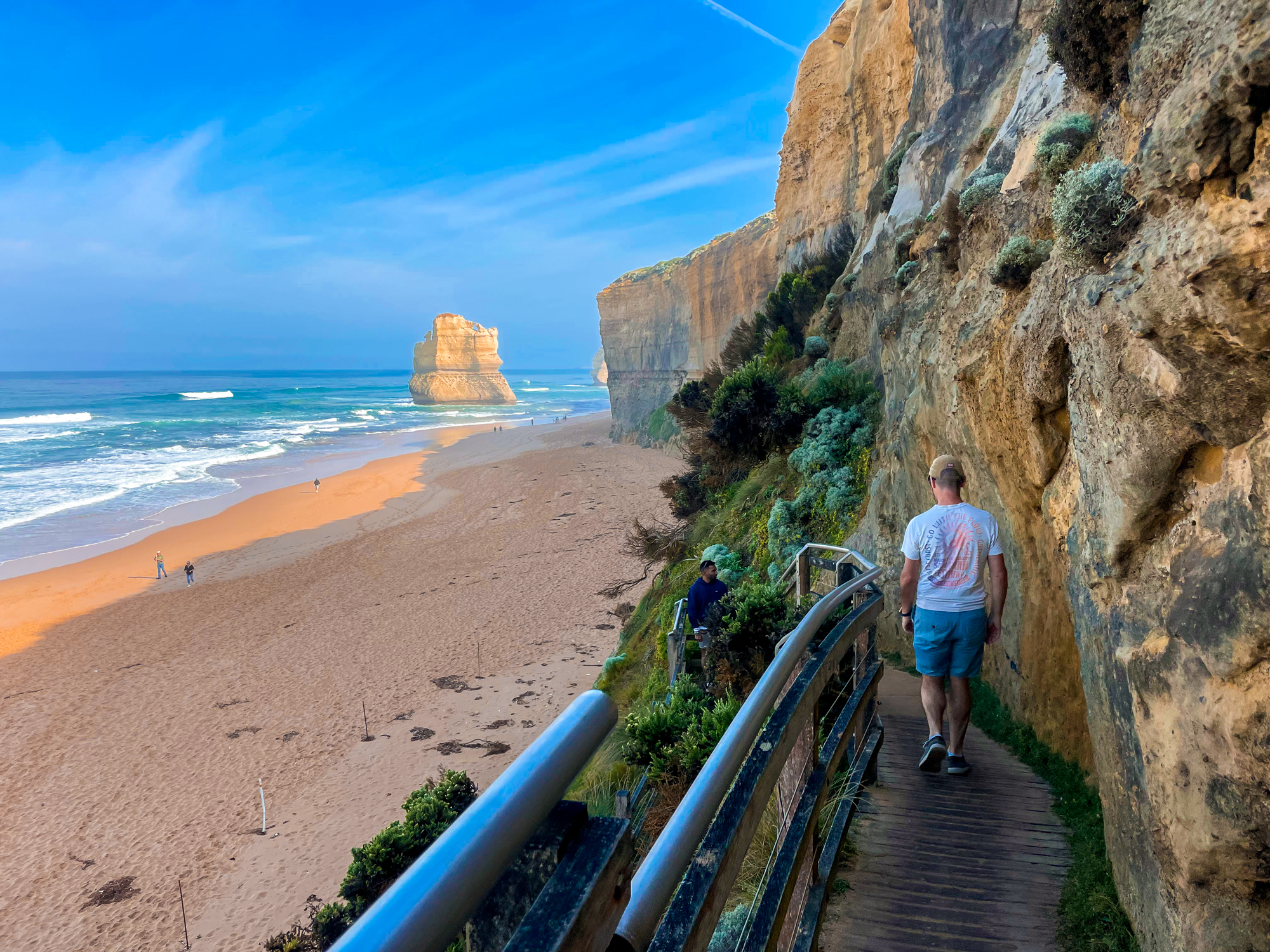
You’ll have to decide which of the three days in Melbourne to miss out on, though.
If you’re not a big fan of museums and galleries, you might want to skip the CBD. If you don’t care for wandering around cool neighbourhoods with hipster cafes and boutique stores, you’ll probably miss out on the north of Melbourne. And if you live somewhere with a better beach — or are visiting in winter — you could choose to skip out on the southern suburbs.
Alter the above itinerary in any way you see fit, then spend your third day in Melbourne not in Melbourne at all.
An Optional Day Three: Driving The Great Ocean Road
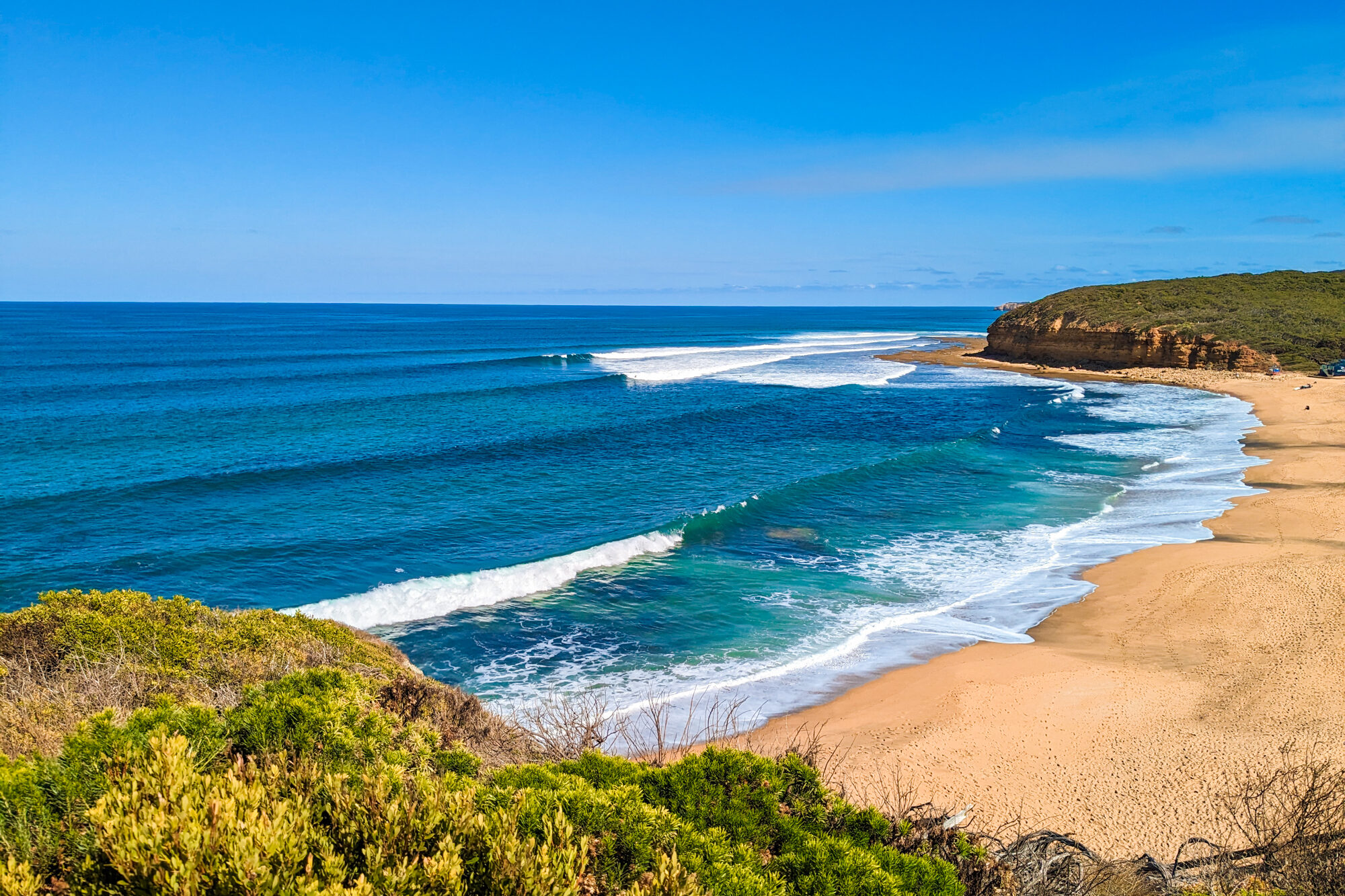
The Great Ocean Road is definitely possible to experience on a day trip — Dave and I have done so multiple times — but it’s going to be a long one. Expect to be out of your accommodation for a minimum of 12 hours.
You’ll also want to hire a car for the road trip, as it’s really not possible to experience the best of the route by public transport. There are numerous tour companies in Melbourne that run day trips on the Great Ocean Road, so if you want to skip out on a long day of driving and have somebody else handle the logistics, that’s a great option. My favourite tour company is Wine Hop And Coastal Tours — they charge A$130 for their excellently-rated day trip.
If you prefer your independence and would rather strike out alone, then pick up your rental car and set your GPS for the town of Torquay, where the Great Ocean Road begins.
This is one of the loveliest spots on the entire road trip and I predict that you’ll be wishing you had longer to spend there from the moment you arrive. Pick up a latter from Mikro Coffee Roasters and head to Pond Cafe for a delicious breakfast beside the beach. Spend half an hour or so wandering beside the beautiful beaches of Torquay before heading back to your car.
Make Bells Beach the next stop on your agenda. This world-famous surf beach is home to the annual Rip Curl Pro competition, but you’ll find surfers to spectate at any time of year. Park up in the sizeable car park and head over to one of the viewing platforms to check out the surf; if the conditions are right, waves can reach as high as five metres.
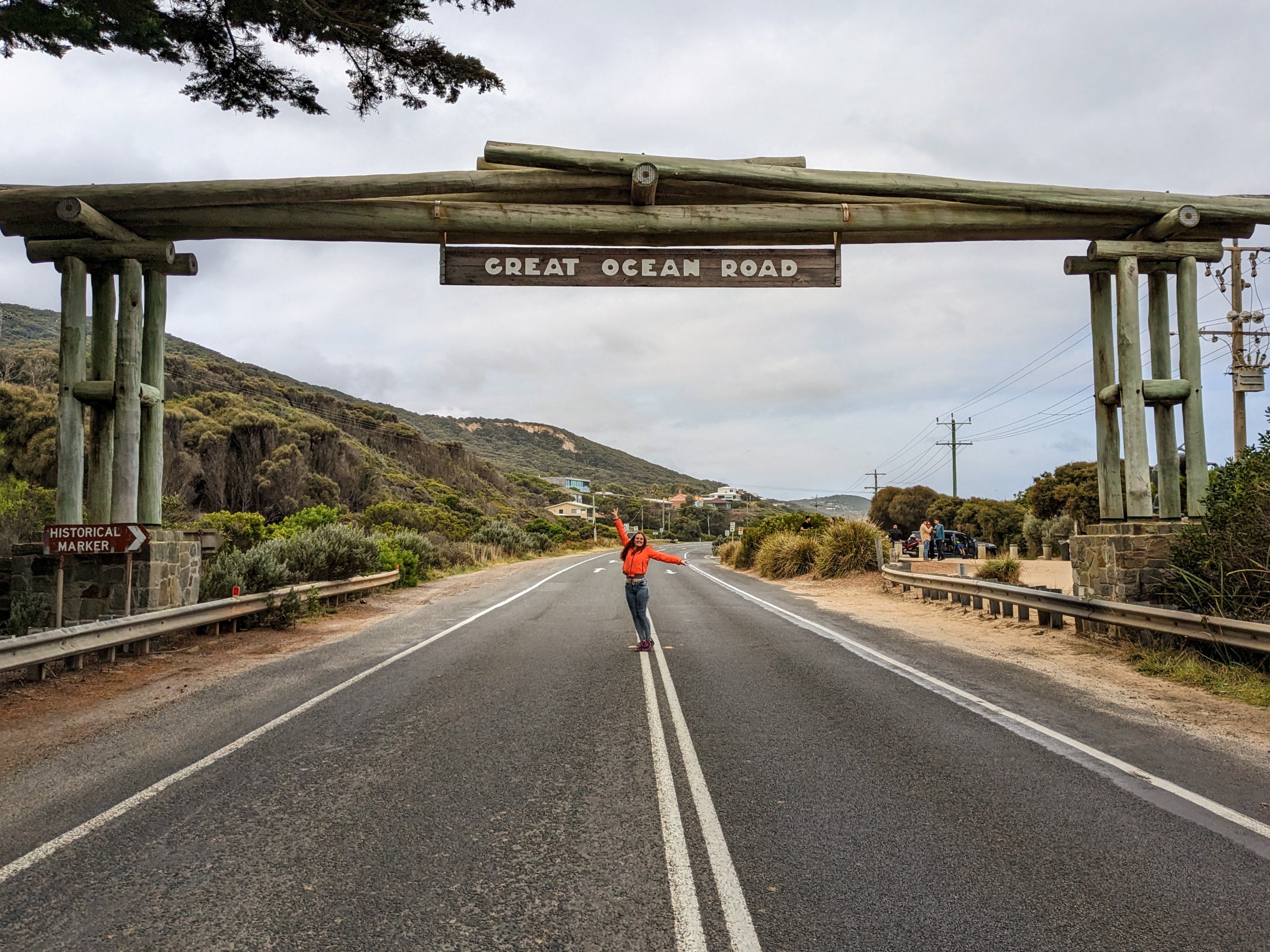
Our next spot on the drive is Memorial Arch. Not many people know that the Great Ocean Road is actually a war memorial and it was even built by returned solders in the 1920s. Memorial Arch is there to commemorate the WWI servicemen who toiled to build this road; back then, it was all bushland and inaccessible to humans. It’s a particularly photogenic arch, so I recommend taking a break here to pose beneath it (while watching for traffic!)
Up next: Have you ever… ever felt like this? When strange things happen, are you going ’round the twist? If you’re a 90s kid like me, you’ll have likely spent your childhood singing the theme tune to Round the Twist, the Australian children’s show about a supernatural family. And the opening credits to the show? They featured the lighthouse at Aireys Inlet! Whether you were a fan of the show or not, the structure is a real beauty; well-worth stopping at to have a look around. There’s a charming looking cafe beside the lighthouse that I don’t recommend going in, by the way, as the food is terrible and overpriced!
The Great Ocean Road is known for its wildlife so I recommend stopping off at Kennett River, a teeny-tiny settlement, with little more than a general store and a thousand koalas. Yes, this is the place to be if you’re keen to spot those native marsupials in the wild. If you’re lucky you’ll be able to spot a couple of them at the start of the trail, saving you time — there’s always been a couple hanging around whenever I’ve swung past.
I recommend having dinner before you get to the Twelve Apostles, and the best place to do so is at Apollo Bay. The Fishermen’s Co-Op is home to the best fish and chips I’ve had in Australia, so I always recommend eating there for lunch on your way to the Apostles.
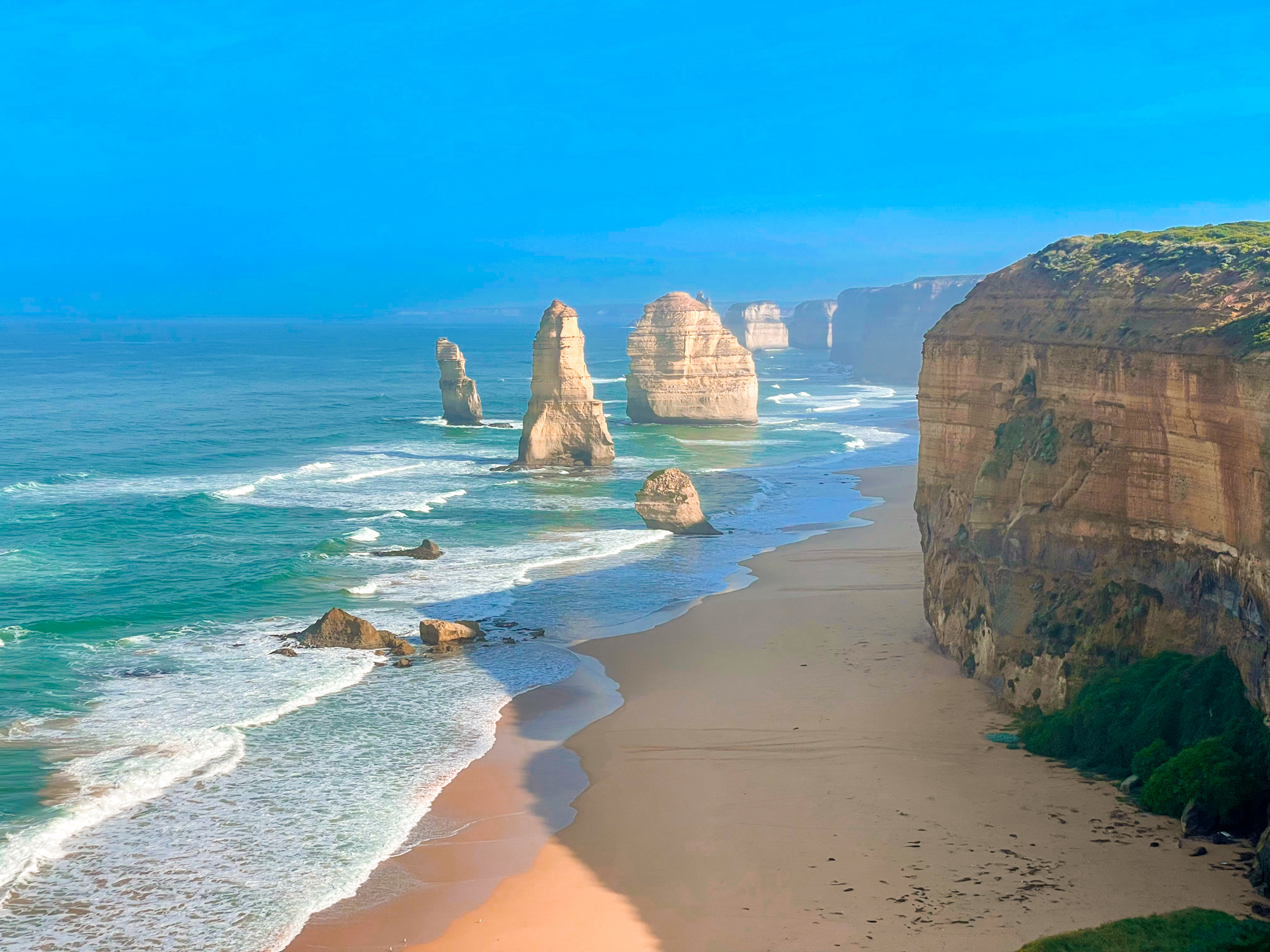
And then, the main attraction!
Of course, if you do just one thing on the Great Ocean Road, it has to be seeing the Twelve Apostles! These towering limestone stacks are forever impressive to me, rising up out of the ocean and just demanding to be photographed.
It takes roughly three hours to get back to Melbourne via the inland route, so take a moment to judge when you want to be leaving the Twelve Apostles. If you’re exhausted and out of time, set your GPS for Melbourne and take the quickest route back. If you’re pumped and eager to explore more, there’s heaps to do around here.
The Gibson Steps are located just before the Twelve Apostles and allow you to get down on to the beach to see these limestone structures up close. You’re able to get a real sense of size when you’re down on the beach; something that’s hard to gain from the viewing platforms.
Beyond the Twelve Apostles, you’ll find the breathtaking Loch Ard Gorge, and beyond that, the infamous London Bridge. The former is equally as impressive as the Apostles, in my opinion, with dramatic cliffs leading out to the sea and providing shelter for a beautiful little beach. London Bridge is a limestone structure that looks just like a bridge and is most famous for having collapsed while tourists were out walking on top of the rock; they had to be air-lifted to safety!
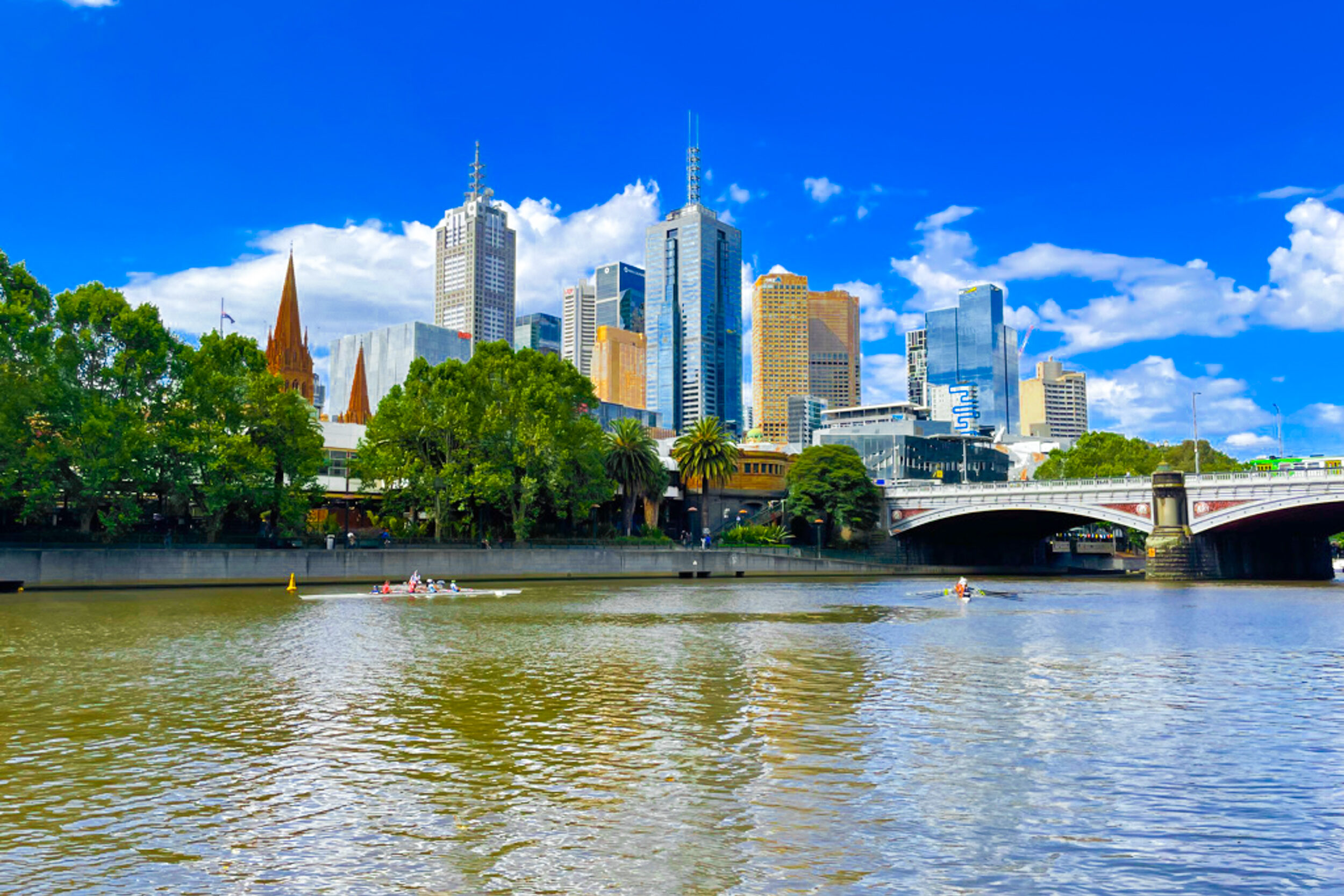
And That Was How to Spend Three Days in Melbourne!
This beautiful city is one of our favourite places in the world and we hope you’ve enjoyed your time here.
These three days are perfect for giving you an overview of the main tourist attractions in Melbourne, while hopefully inspiring you to return later to explore even more.
And now we want to hear from you down in the comments below: which of the three days were your favourite?
All images copyright Everything Victoria
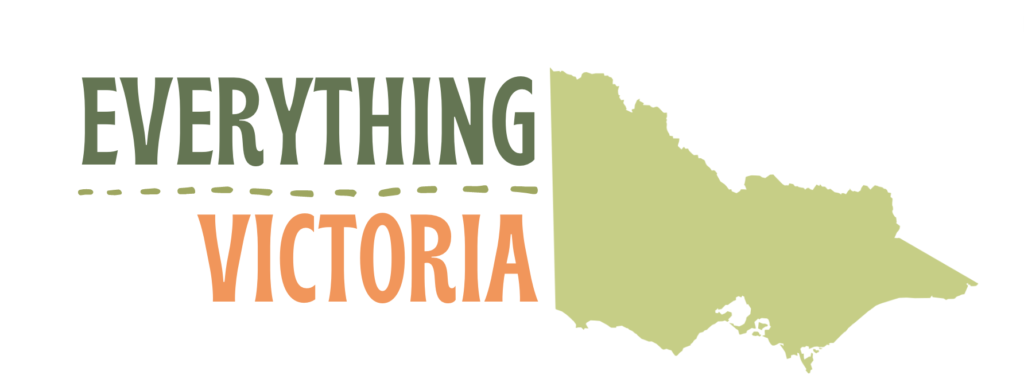
What a great article which really captures the heart of our beautiful city and state.
Thank you so much, Gwyneth! That really means a lot to me 🙂
That’s an awesome recommendation for 3 days in Melbourne. We are in town for the Lainey Wilson concert and your itinerary will help us see all of Melbourne and enjoy what food the city has to offer in our 3 days!
Thank you 🙂
Thanks so much, Brad! I hope you had a great time at the concert and enjoyed all of Melbourne’s delights over your three days in town! 🙂
Good that I found your article! I will visit Melbourne (irst time) soon and will try your itinerary 🙂